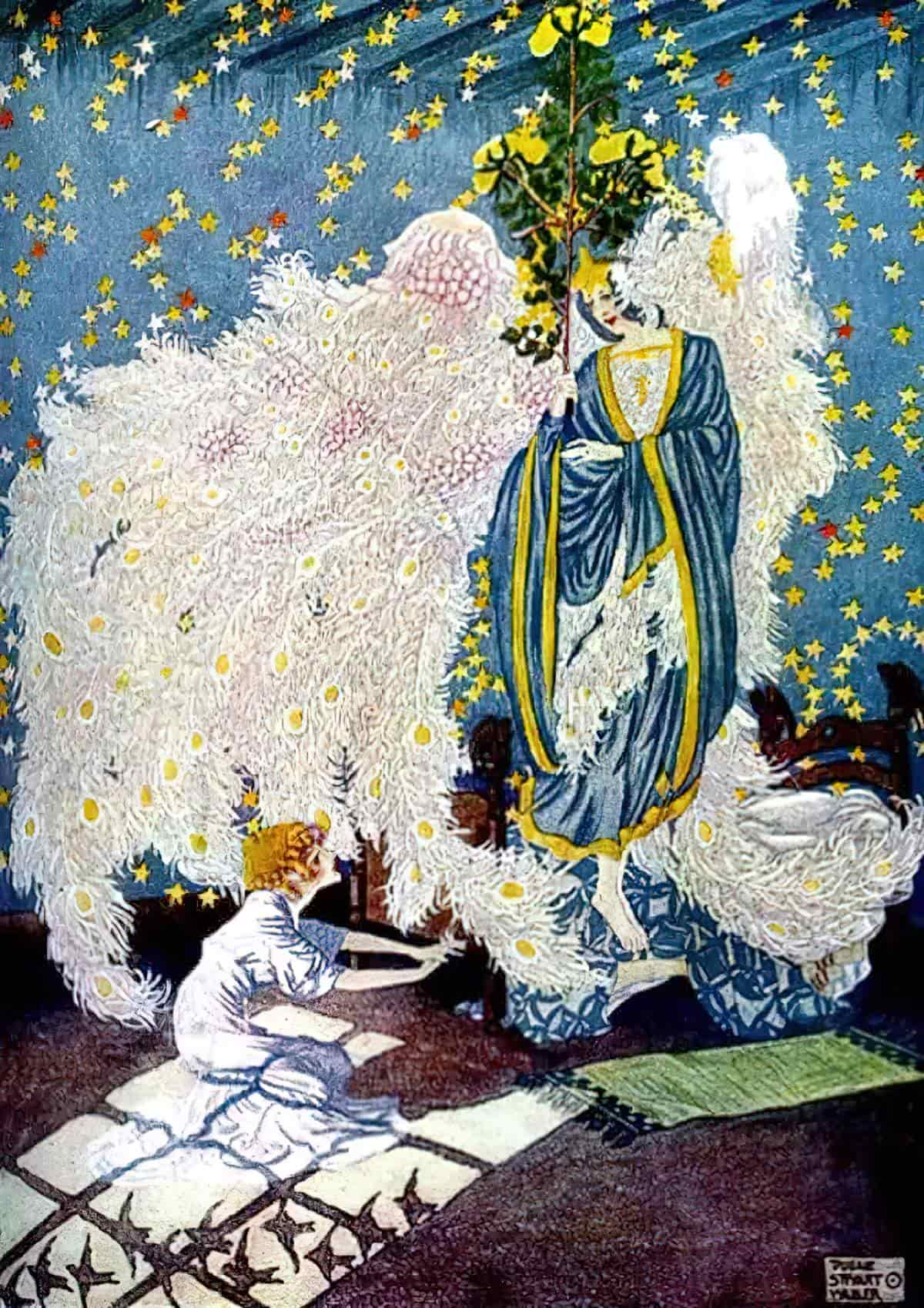“The Red Shoes” (1845) is a — let’s face it — horrific literary fairytale by Hans Christian Andersen (1805 – 1875), built on a tradition of stories in which a female character is punished (by her ostentatious, sexually charged shoes) for her social deviation.
What does it mean to deviate if you’re a young woman? Well, some things never change. Anything other than getting married and giving birth to babies is an aberration and a deviation.
Hans Christian Andersen is commonly remembered for his tales for children: “The Ugly Duckling“, “The Emperor’s New Clothes” and so on. But he wrote equally for adults. “The Red Shoes” is a story for adults. This one contains violence and torture, but just as upsetting to many readers, it contains misogyny and over-the-top punishment which adds up to outright injustice against a little girl who, quite naturally, saw some nice red shoes she liked and acquired them despite wide disapproval.
A BRIEF HISTORY OF “THE RED SHOES”
A literary fairy tale is one which started on paper rather than in oral tradition, with an identifiable author. However, even literary fairy tales tend to draw heavily from oral tales of yore.
Compared to Hans Christian Andersen’s other literary fairy tales, this one not so much. However, there are similarities to an oral tale called “The Girl Without Hands” a.k.a. “The Helpless Maiden” a.k.a. “The Armless Maiden” a.k.a. “The Girl With Silver Hands”. A little girl’s father chops off his daughter’s arms/hands because he did a deal with the devil. But through self-abasing filial piety and God-love she attracts her own guardian angel, who leads her to the king to get married but the king is called away to war. She’s alone again. Yadda yadda, she eventually grows her flesh hands back because of how good she is.
Back to feet.
Feet — and shoes — are important in fairy tales. If a character in a fairy tale has remarkable feet in some way, watch out. Shoes are used to show characterisation in many famous tales.
- Cinderella lost her glass slipper on the stairs.
- Wear a pair of seven league boots to get from A to B quick as a flash.
- Elves decide to help out a shoemaker in “The Elves and the Shoemaker“.
- Then there are the slippers of the Seven Dancing Princesses…
Why footwear, though? Because shoes were probably the most expensive item people from antiquity owned. Clothing itself was super expensive, which is why the Puss In Boots plot works. (Otherwise, anyone could pretend to be king simply by going out and buying himself some king’s clothing, right?) But shoes are next level expensive. Like watches and other jewellery, look at someone’s shoes, know how much money they have. Basically. That’s not so true today, but has only quite recently stopped being a marker of wealth, a proxy for how much respect to afford another human being.
Unlike the shoes mentioned above, the shoes in “The Red Shoes” are not transformative. That is, they won’t change your life for the better. When did shoes turn evil?
Shoes were also important to Hans Christian Andersen, the author, because his father was a shoemaker. Weirdly, the father (also called Hans) believed they were related to royalty, which no doubt affected Hans Christian Andersen’s sense of entitlement and general life let-down. One day, a wealthy woman brought a bolt of red silk to Hans Christian Andersen the elder and asked her to make slippers for her daughter. Disapproving, Hans the elder made them anyway. But when the wealthy woman returned, she wasn’t happy with what he’d made. As shoes, the red silk looked far more gaudy than the woman had imagined. She accused the shoemaker of ruining her good silk.
So Hans the elder cut them up in front of her, exclaiming, “Well, if I’ve wasted your silk, I may as well waste my leather as well!” This should offer some insight into the temper of Hans Christian Andersen the Elder.
This is the formative incident said to have inspired “The Red Shoes”. Note that in the real life incident, the little girl — who never even got her red silk shoes — had no part in any of it. She was a utter bystander. Yet in the fictional story, she really gets punished. Like, overkill punished.
Oh yes, and Hans Christian Andersen the younger — the famous writer — also had a half-sister who he hated. Her name was Karen. The main character (and victim) of “The Red Shoes” also happens to be called Karen. Why did Hans hate her? Biographers have their theory. Karen had been born to Hans’ mother out of wedlock, a big no-no for women in the Victorian era. Biographers speculate that Hans hated Karen because he hated sex outside marriage, which led to him hating sex in general… or something. Personally, I think this is a stretch. The existence of extramarital sex didn’t stop almost every other man in the Victorian era from continuing to seek out sex and procreate where possible. (Biographers have all sorts of weird opinions on Andersen’s sexuality.)
In contemporary culture, ‘Karen shoes’ look quite different… But the misogyny remains the same.

Real life shoe-shop incident aside, a literary predecessor to Andersen’s “The Red Shoes” is “The Danced Out Shoes”, known by various titles. (The Grimm Brothers recorded it under the title “The Shoes That Were Danced To Pieces“.)
Basically, Hans Christian Andersen was inspired by both real life and by stories he had heard and read. Like every other writer who has ever lived.
An interesting thing about Andersen, though: Unlike the Grimms and Charles Perrault, who set about writing down oral fairytales from the lower classes, Andersen himself came from that lower class they were collecting from. His dad was a shoemaker, as we already know, and his mother was a lowly washer woman who’d had a child out of wedlock. The irony is that Hans Christian Andersen avoided writing down the tales he knew very well from his own, native oral storytelling tradition. Instead, he built on them and created brand new stories from them.
This isn’t such an irony when you think about it, though. Those oral tales would have seemed exotic and new to the upper class fellows collecting them. The Grimms were like linguists or anthropologists landing on a remote island, fascinated by the unfamiliar culture of oral storytelling. But for Andersen, who spoke native ‘oral fairy tale’, fascination came from crafting something new. Why write down what you’ve heard your whole life, and know like the back of your hand?
Vanity is becoming a nuisance, I can see why women give it up, eventually. But I’m not ready for that yet.
Margaret Atwood
Ringleaders of Redemption: How Medieval Dance Became Sacred
In popular thought, Christianity is often figured as being opposed to dance. Conventional scholarship traces this controversy back to the Middle Ages. Historical sources, however, suggest that medieval dance was a complex and ambivalent phenomenon. During the High and Late Middle Ages, Western theologians, liturgists, and mystics not only tolerated dance; they transformed it into a dynamic component of religious thought and practice. In Ringleaders of Redemption: How Medieval Dance Became Sacred (Oxford UP, 2021), Kathryn Dickason reveals a long tradition of sacred dance in Christianity, one that the professionalization and secularization of Renaissance dance obscured, and one that the Reformation silenced and suppressed.
New Books Network
WHERE TO ACCESS “THE RED SHOES” BY HANS CHRISTIAN ANDERSEN
Being out of copyright, you can find the original “The Red Shoes” at various places on the Internet e.g. at World History Commons.
Andersen’s short story is discussed at Singing The Bones, a 20 minute podcast. Content note for incorrect information about asexuality. (Whenever you read anything about Hans Christian Andersen’s so-called Victorian repression, or gay repression or avoidance of sex due to trauma etc. please look up the definition of asexuality as it is understood today, the only unifying theory of Andersen which actually makes sense.)
I also recommend the reading by Parcast’s Tales podcast. “The Red Shoes” is episode 84, 19 August 2020. This is not a straight reading but a retelling using more contemporary (and engaging) language, with music and Foley effects. I really enjoy listening to classic tales at the Parcast Tales podcast.
If you just want to listen to Andersen’s original story read aloud, you can find it at Librivox.
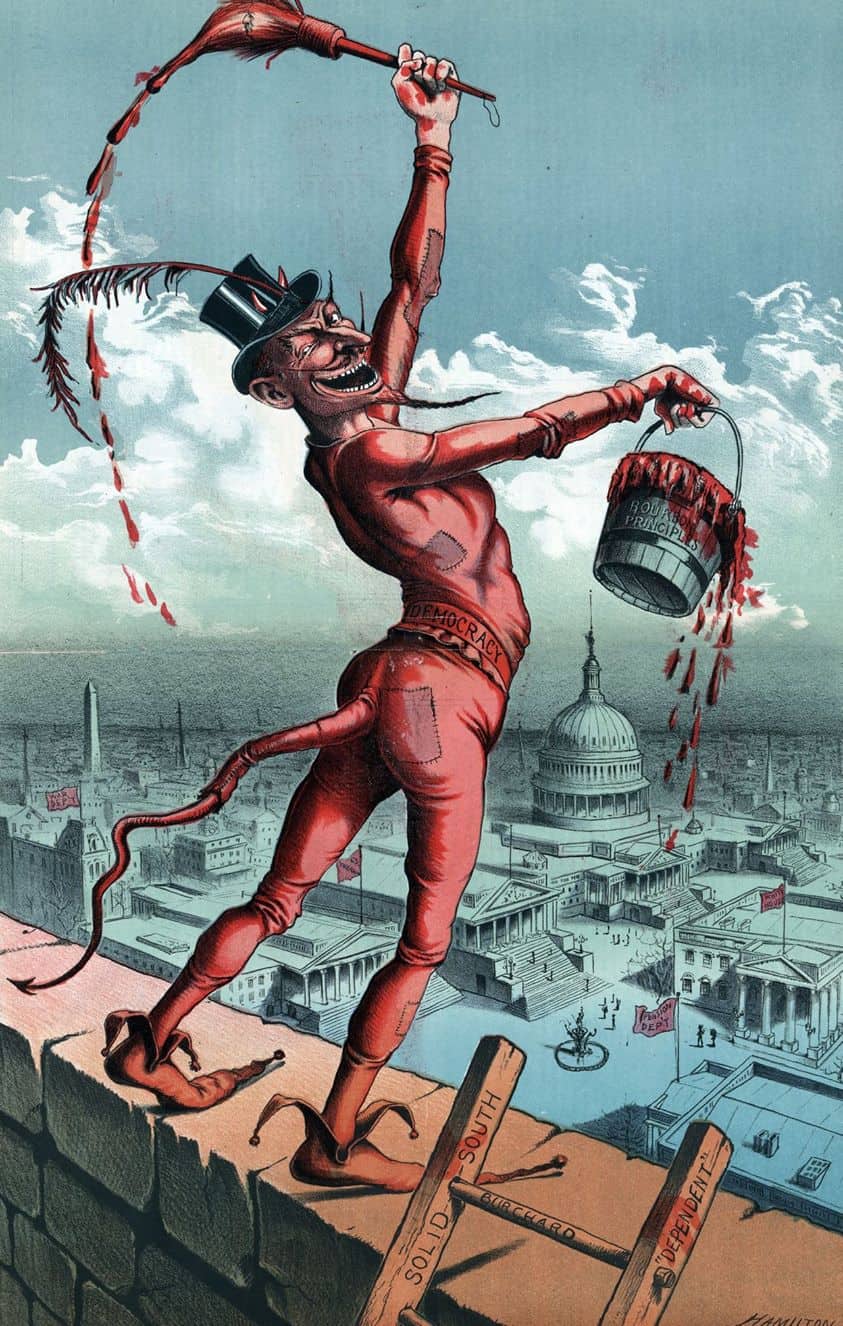
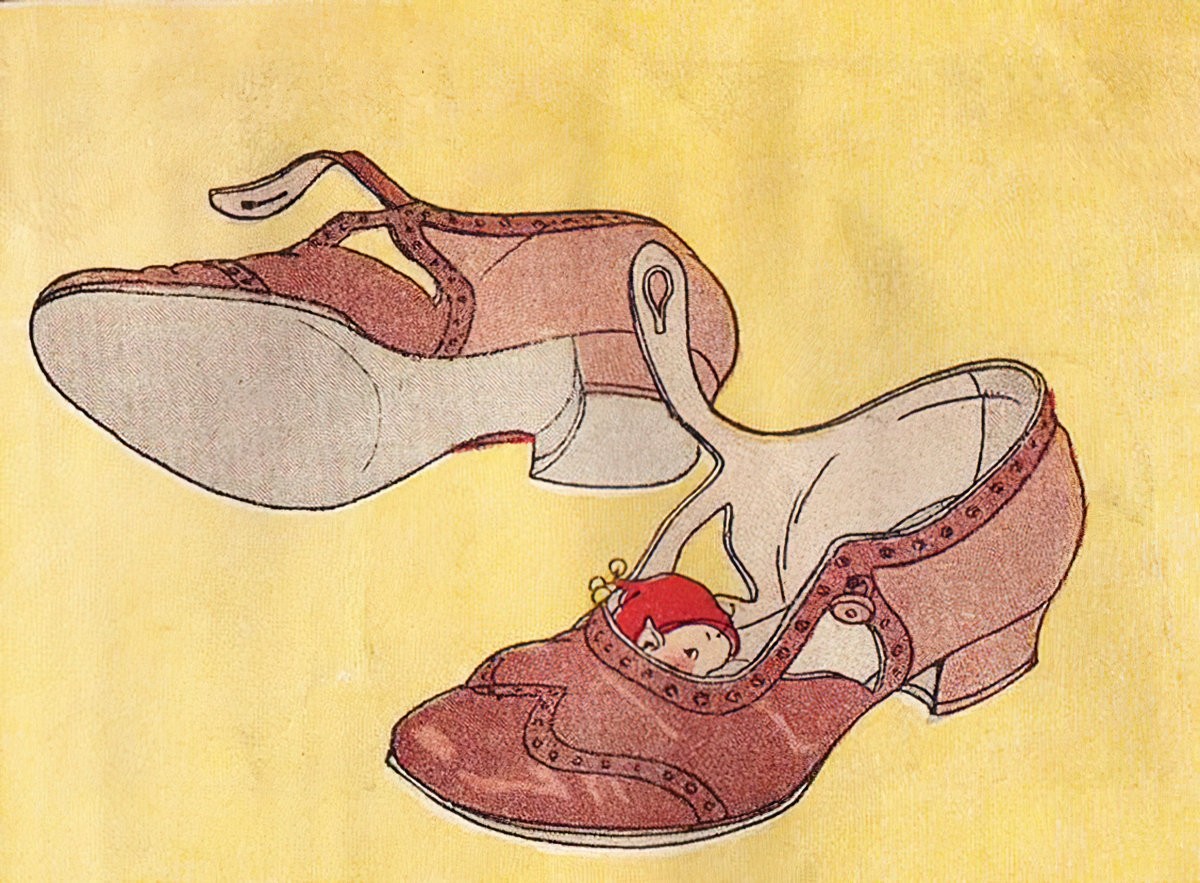
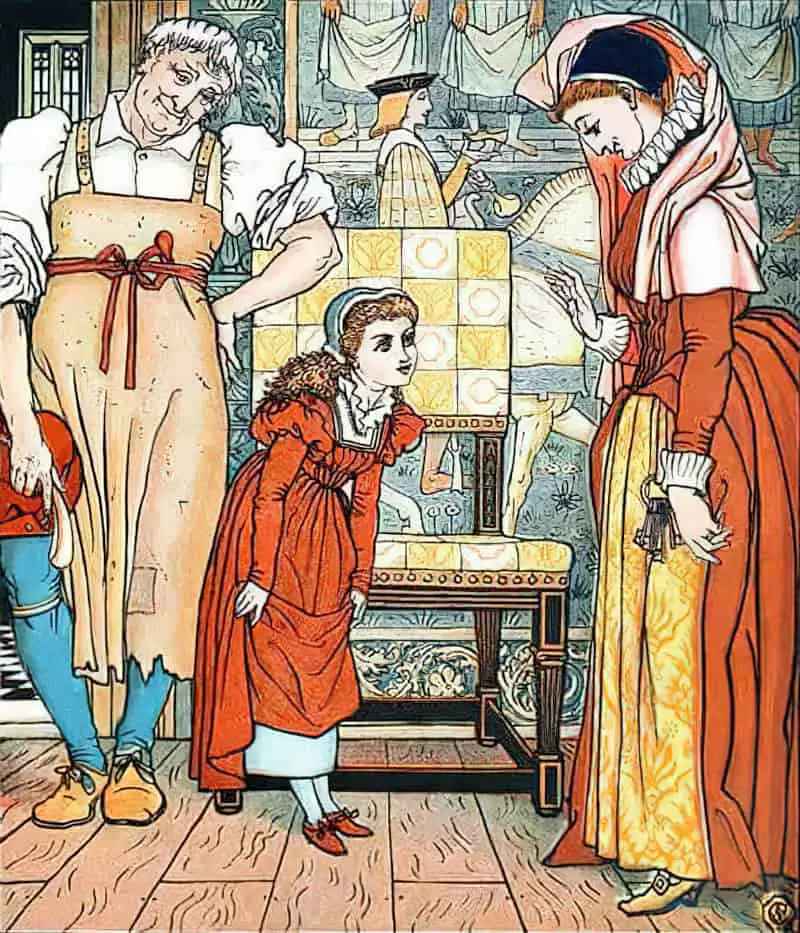
SYMBOLIST READING OF “THE RED SHOES”
What is the symbolist movement in literature?
SHOE AS FEMALE SEXUALITY
In Yoni culture, the shoe is a symbol for female genitalia. Karen’s desire for red shoes represents a deeper, sexual desire: The desire to attract male attention and to lure men in, against their will (poor, helpless things).
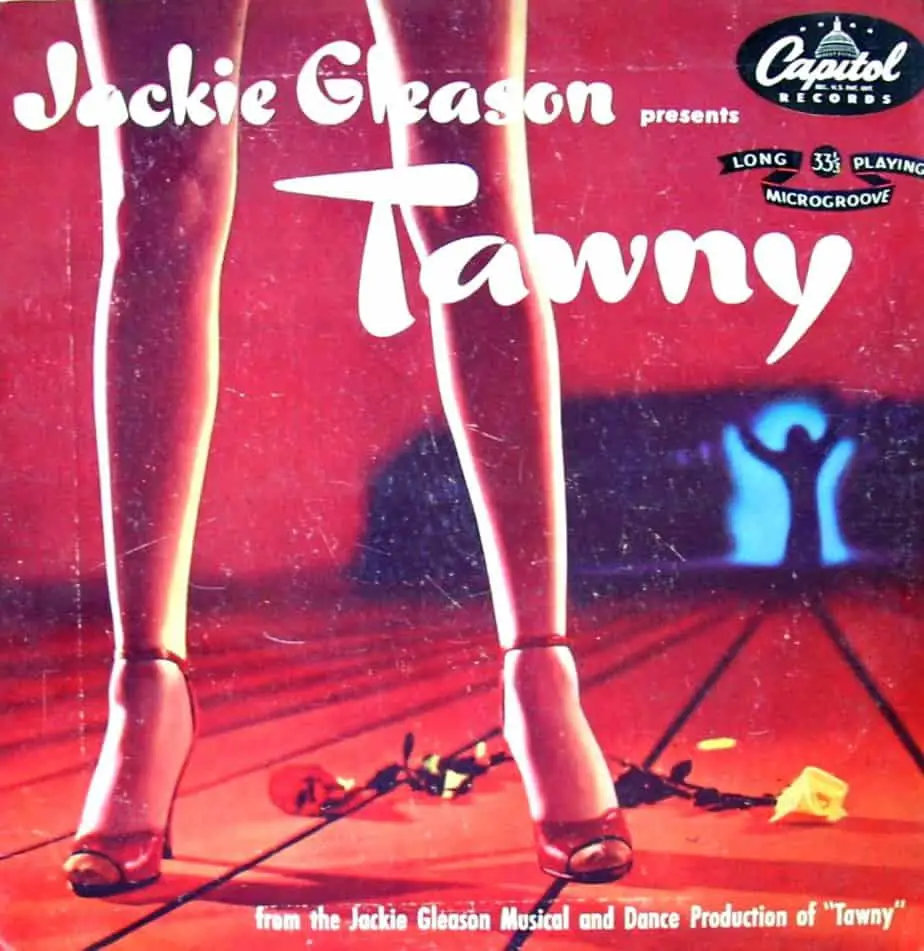
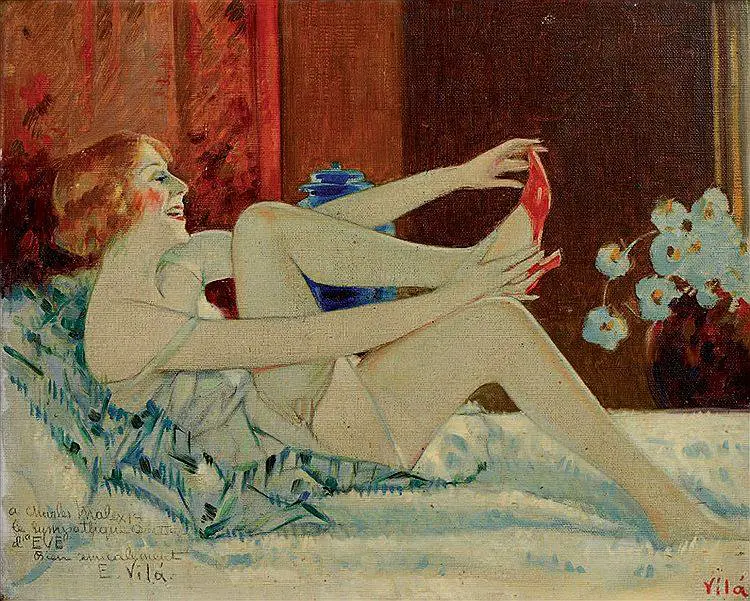
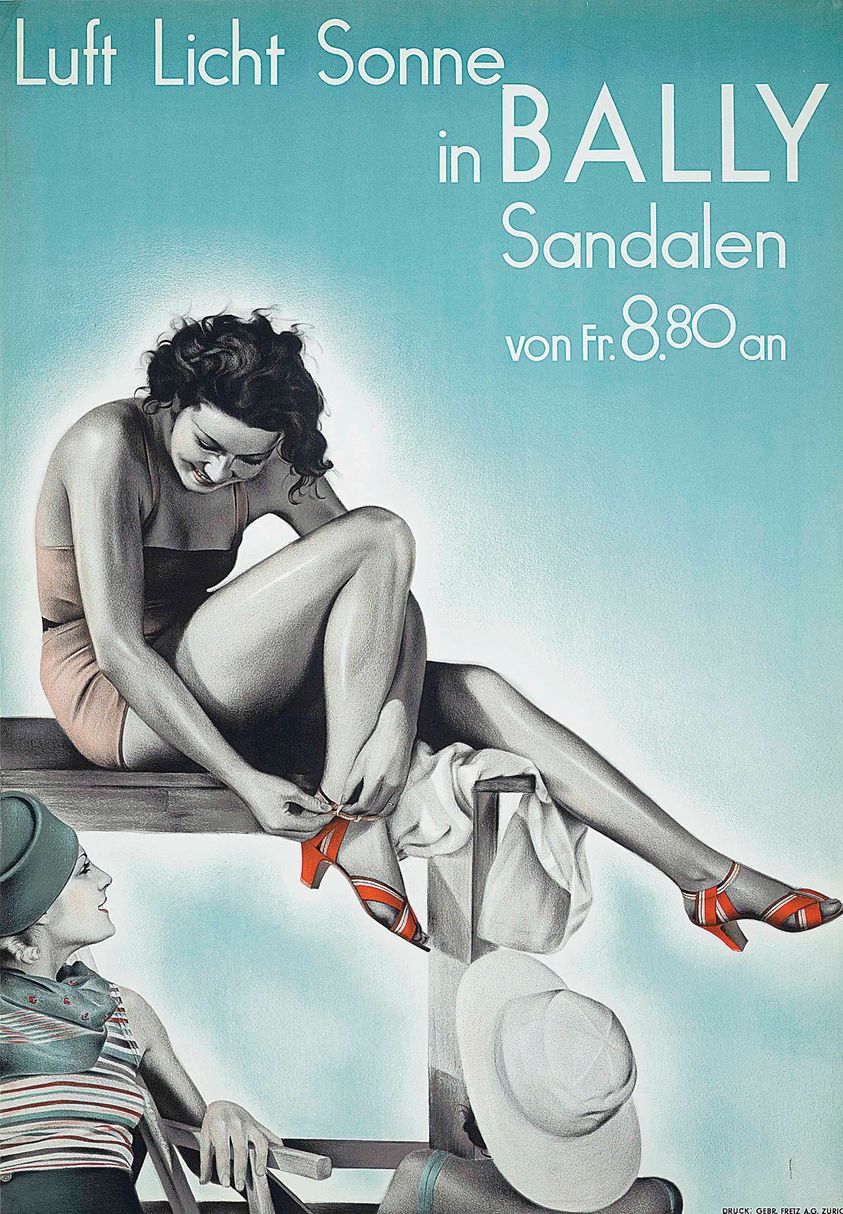
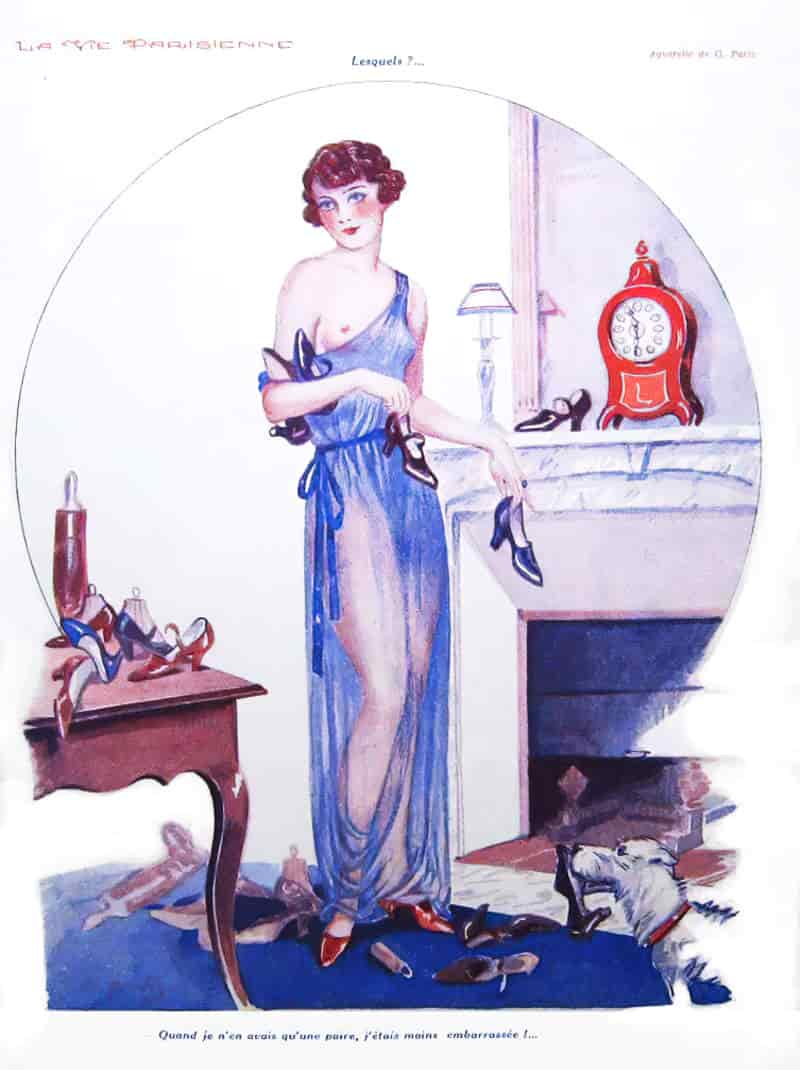
DANCING AS LOSS OF SELF TO THE DEVIL
The dancing sequence represents the phase in which Karen’s body is taken over by sin.
What’s the sin? Pride, or vanity.
[P]eople said that she was pretty. But the mirror said, “You’re much more than pretty – you’re beautiful!”
“The Red Shoes”
THE ONCE AND FUTURE SEX BY ELEANOR JANEGA (2023)
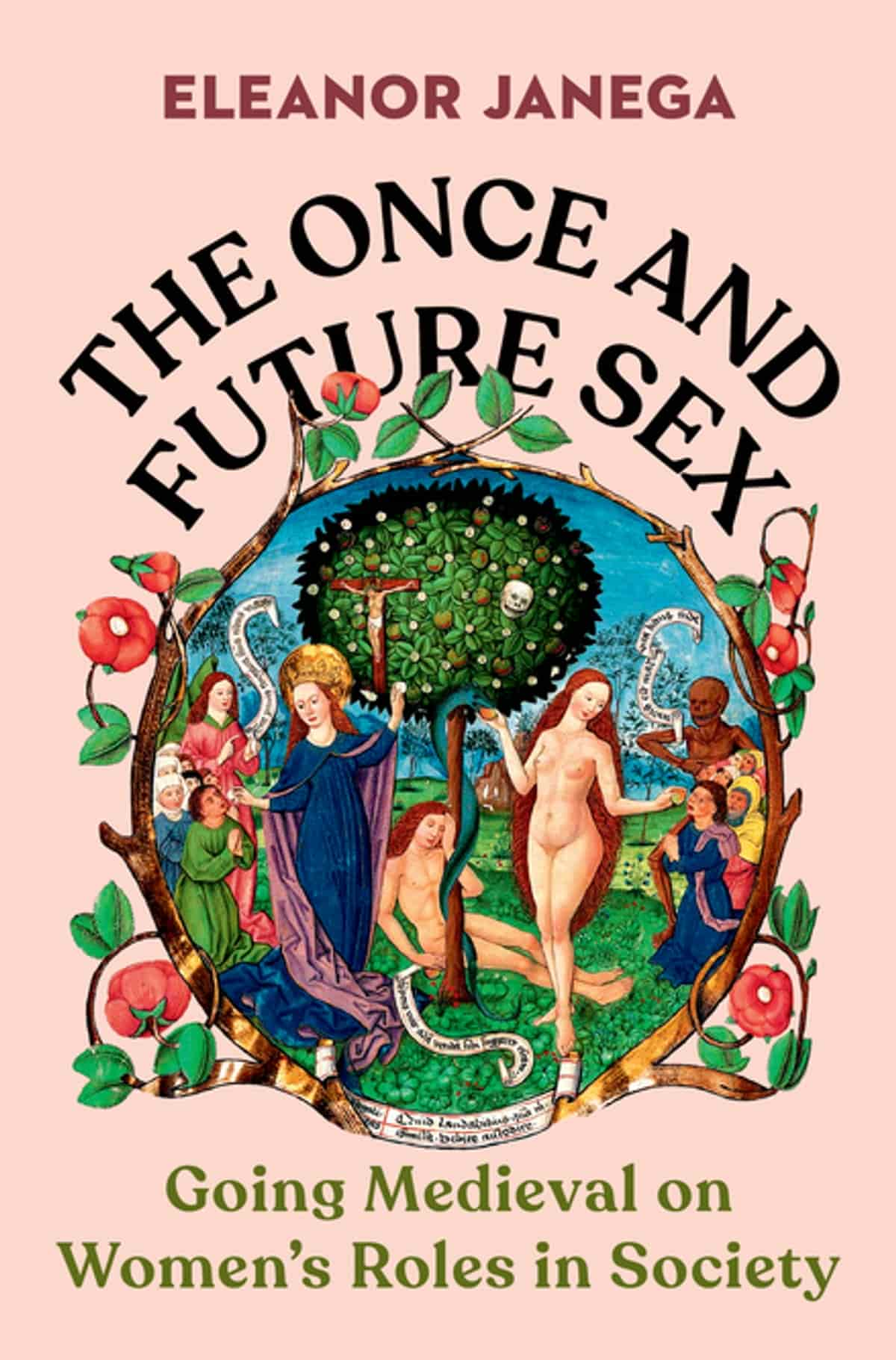
What makes for the ideal woman? How should she look, love, and be? In this vibrant, high-spirited history, medievalist Eleanor Janega turns to the Middle Ages, the era that bridged the ancient world and modern society, to unfurl its suppositions about women and reveal what’s shifted over time—and what hasn’t.
Enshrined medieval thinkers, almost always male, subscribed to a blend of classical Greek and Roman philosophy and Christian theology for their concepts of the sexes. For the height of female attractiveness, they chose the mythical Helen of Troy, whose imagined pear shape, small breasts, and golden hair served as beauty’s epitome. Casting Eve’s shadow over medieval women, they derided them as oversexed sinners, inherently lustful, insatiable, and weak. And, unless a nun, a woman was to be the embodiment of perfect motherhood.
In contrast, drawing on accounts of remarkable and subversive medieval women like Eleanor of Aquitaine and Hildegard of Bingen, along with others hidden in documents and court cases, Janega shows us how real women of the era lived. While often mothers, they were industrious farmers, brewers, textile workers, artists, and artisans and paved the way for new ideas about women’s nature, intellect, and ability.
Obviously, Hans Christian Andersen was writing in an era where sex for women was bad. Ergo, Karen’s interest in shoes as a sexual object is very, very wrong.
STORY STRUCTURE OF THE RED SHOES
SHORTCOMING
The story starts out with Karen as victim. It’s like Andersen presents her as a poor little creature so he can subvert our expectations. She will soon be revealed as a heathen, no Little Match Girl:
Once there was a little Girl – so delicate and pretty. Because she was poor, she had to go barefoot in the summer, and in the winter she had to wear big wooden shoes that rubbed against her instep until her little feet became quite red. It was awful.
“The Red Shoes”
Here’s the thing about Karen. She doesn’t actually do anything wrong by modern standards. But let’s talk about what she’s supposed to have done wrong, according to the specific misogynistic climate of the mid 1800s. There’s the not-being-excited-about-church thing, sure. She’s not a good and proper Christian. One who takes service seriously does not wear red shoes (!!!!) to church! For her confirmation! The redness of the shoes serve to show readers that Karen is simply making a show of going to church. She is actually rejecting her confirmation; rejecting God.
But also? She doesn’t perform femininity correctly when it comes to her poor dying mother.
Reminder: This little girl has an almost dead mother when we meet her at the start of the story. Normally this would engender our sympathies! Except Karen is soon unmasked to be a girl so self-absorbed in beautifying and sexually objectifying herself that even a dead mother is of no consequence. Today we might misread such a character as narcissistic. (Narcissism has a very specific meaning. If you’re not sure what it is, I recommend you follow that link, because I found a really good resource on narcissism and took notes.) In the Victorian era, people spoke in terms of ‘vanity’, a term we hear far less often today, except in reference to bathroom cabinetry. Both are gendered terms, thought by many to affect women more than men. (Clinical narcissism is actually more prevalent in men.)
I figure Karen is using the shoes to avoid thinking about her dead mother. Of course, Karen’s avoidant behaviours weren’t well understood in Victorian times. In modern psychology, avoidance coping is a coping mechanism and form of experiential avoidance. Avoidance is characterized by a person’s efforts, conscious or unconscious, to avoid dealing with a stressor in order to protect oneself from the difficulties the stressor presents.
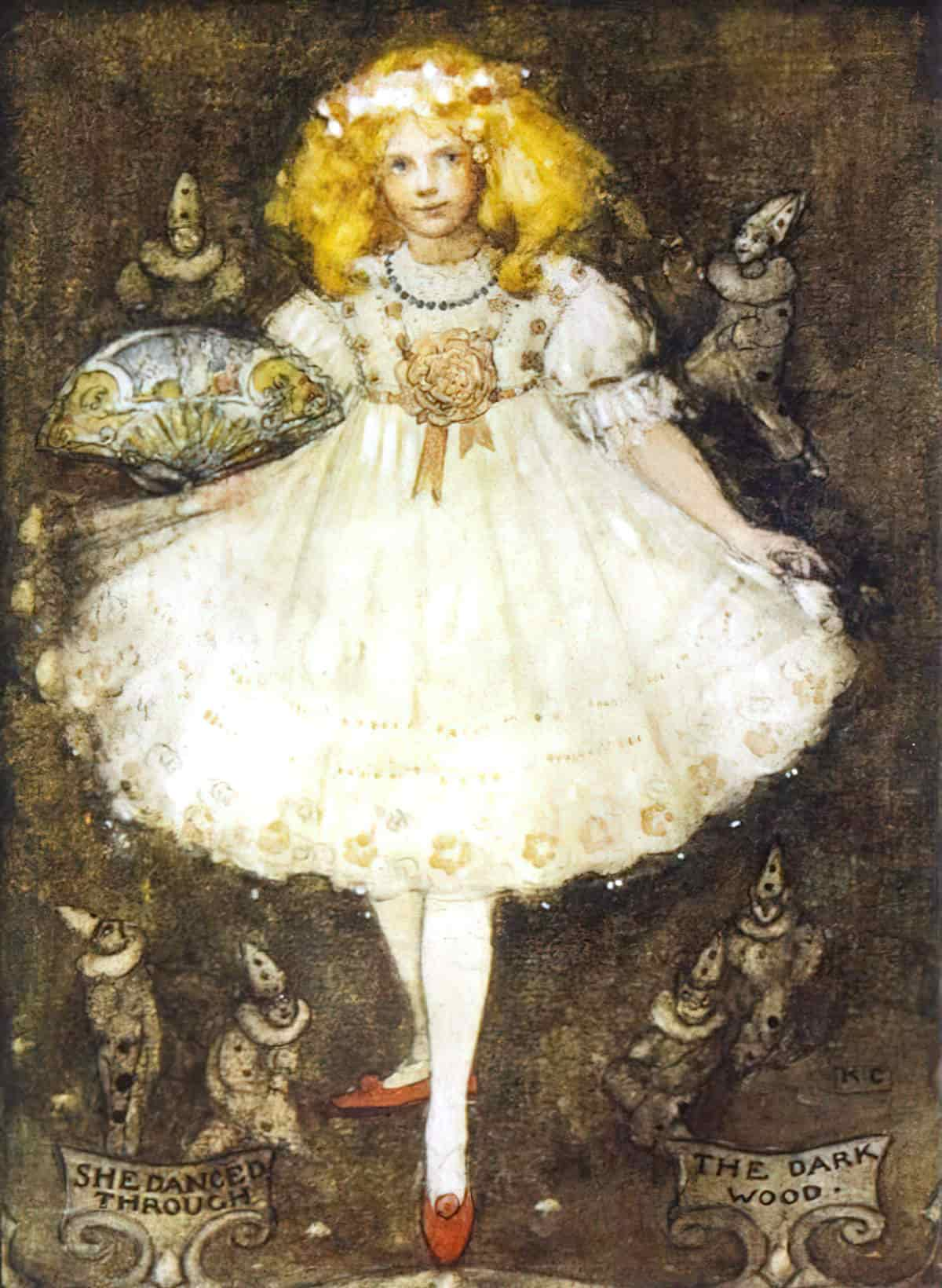
DESIRE
Desire for the red shoes is proxy for a deeper desire: for admiration, attention as a way of attracting love.

OPPONENT
The Minotaur Opponent is the pair of red shoes, who have taken it upon themselves to punish a girl for thinking about them too much in church when she should be thinking of God.
But stories require an opponent in human form. Why does Karen meet a soldier in a tree? Why not a devil at the crossroads or something?
Well, the soldier basically is a stand-in for the devil. The soldier’s red beard suggests he is associated with the devil. Let’s consider the historical context of this story. Post Napoleon, soldiers didn’t have the greatest reputation among the general population, seen as corruptors of young women.
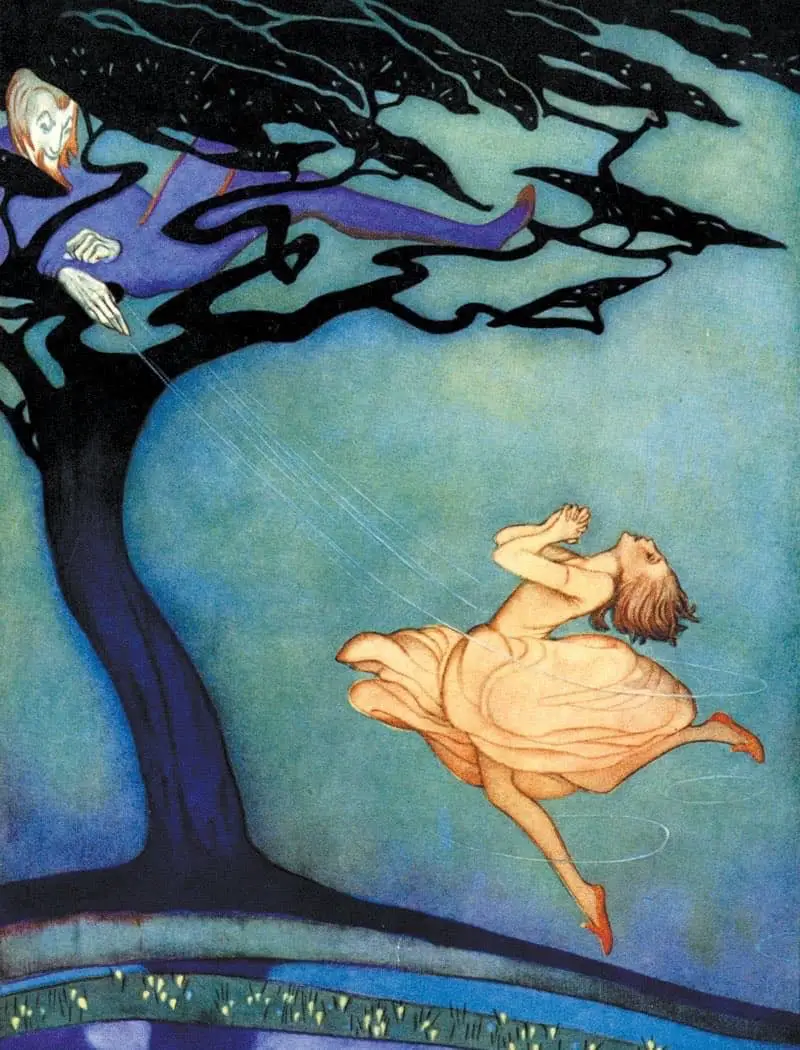
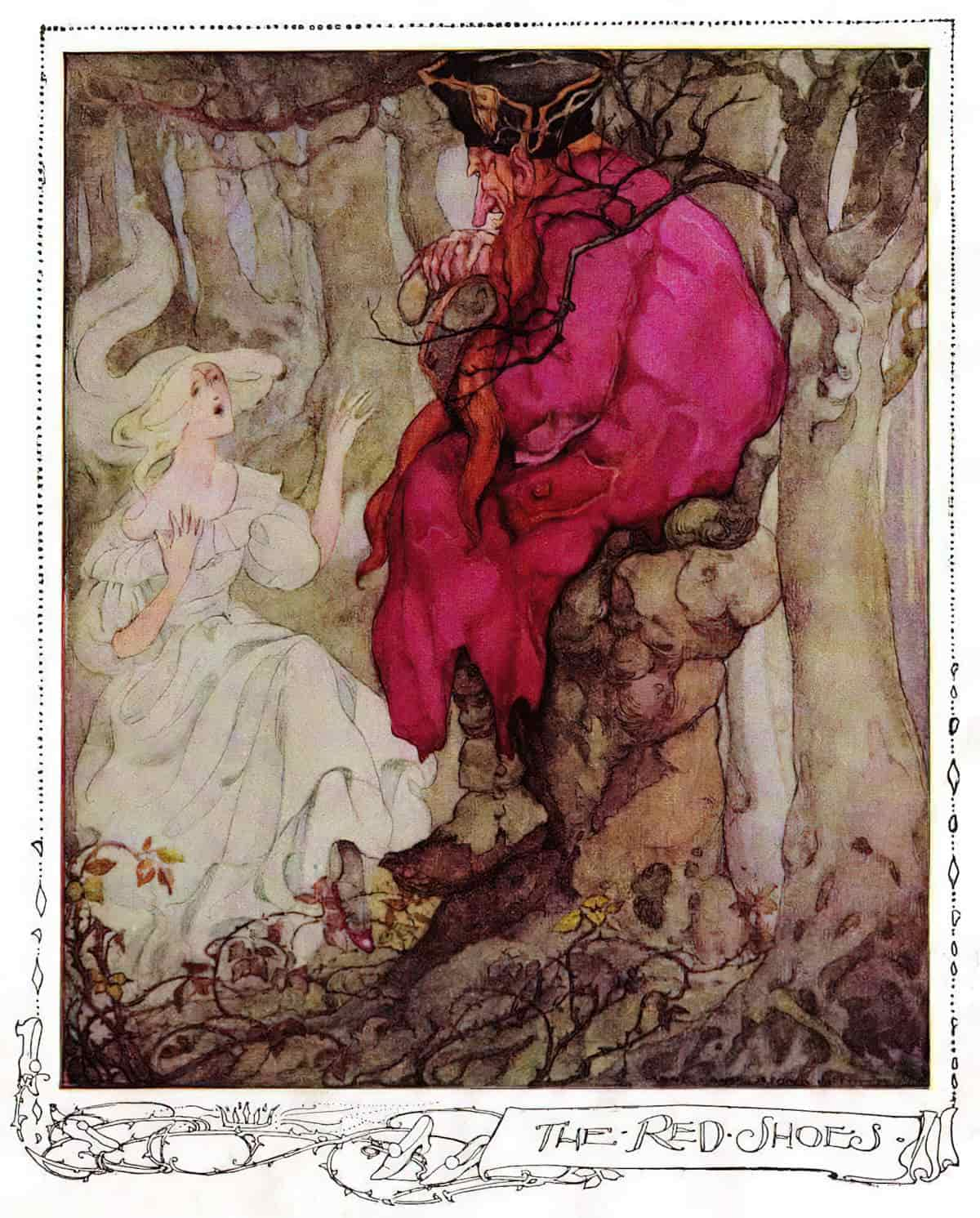
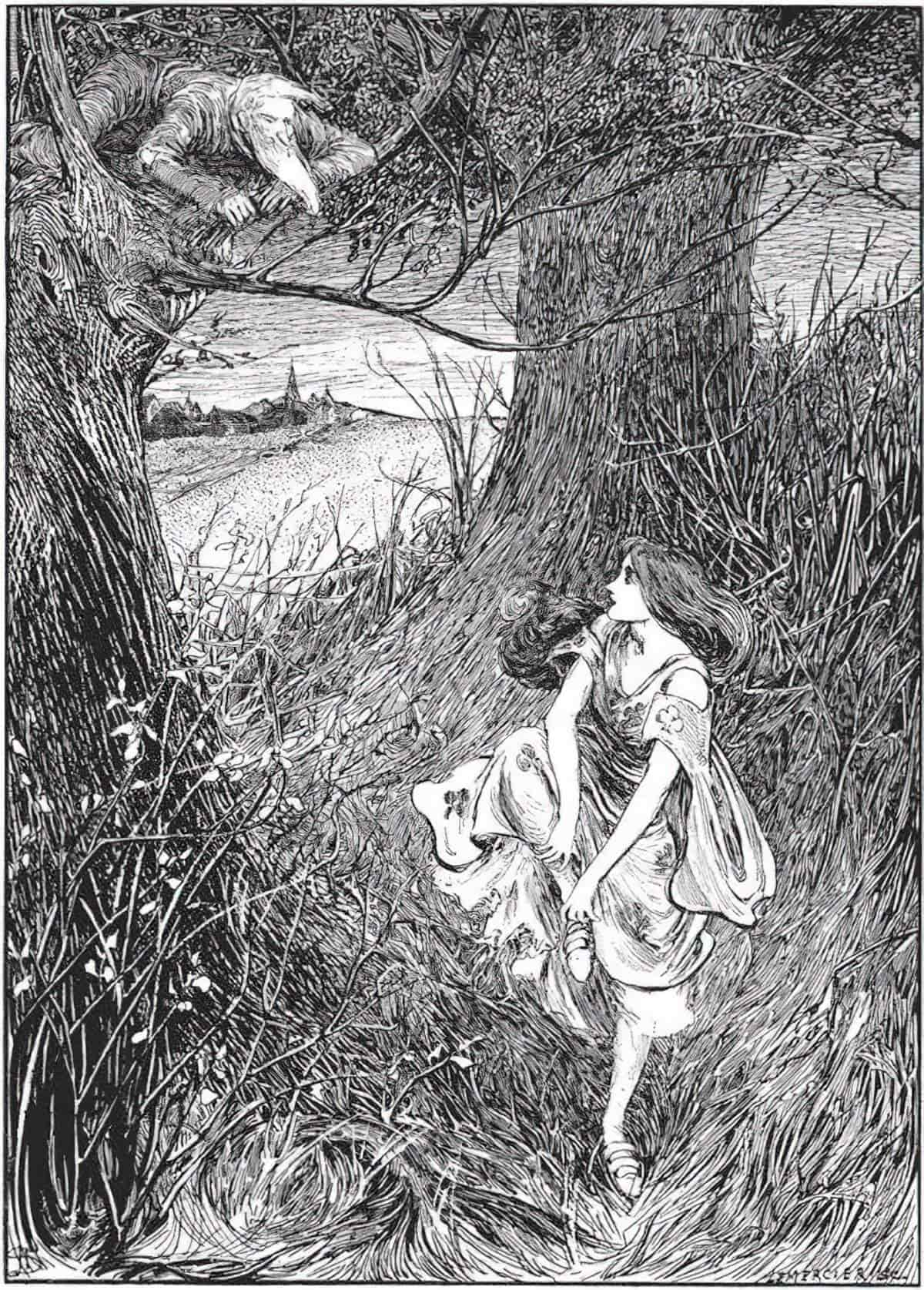
I don’t believe the executioner is supposed to serve as the story opponent. It is actually the executioner who saves Karen’s life, much as a surgeon saves someone from gangrene by performing an amputation.
PLAN
Karen isn’t exactly in a position to make plans. All she can do is yell for help. Her opponents are the ones with plans in this melodrama.
THE BIG STRUGGLE
The story climax is the dance scene, followed by the dismembering.

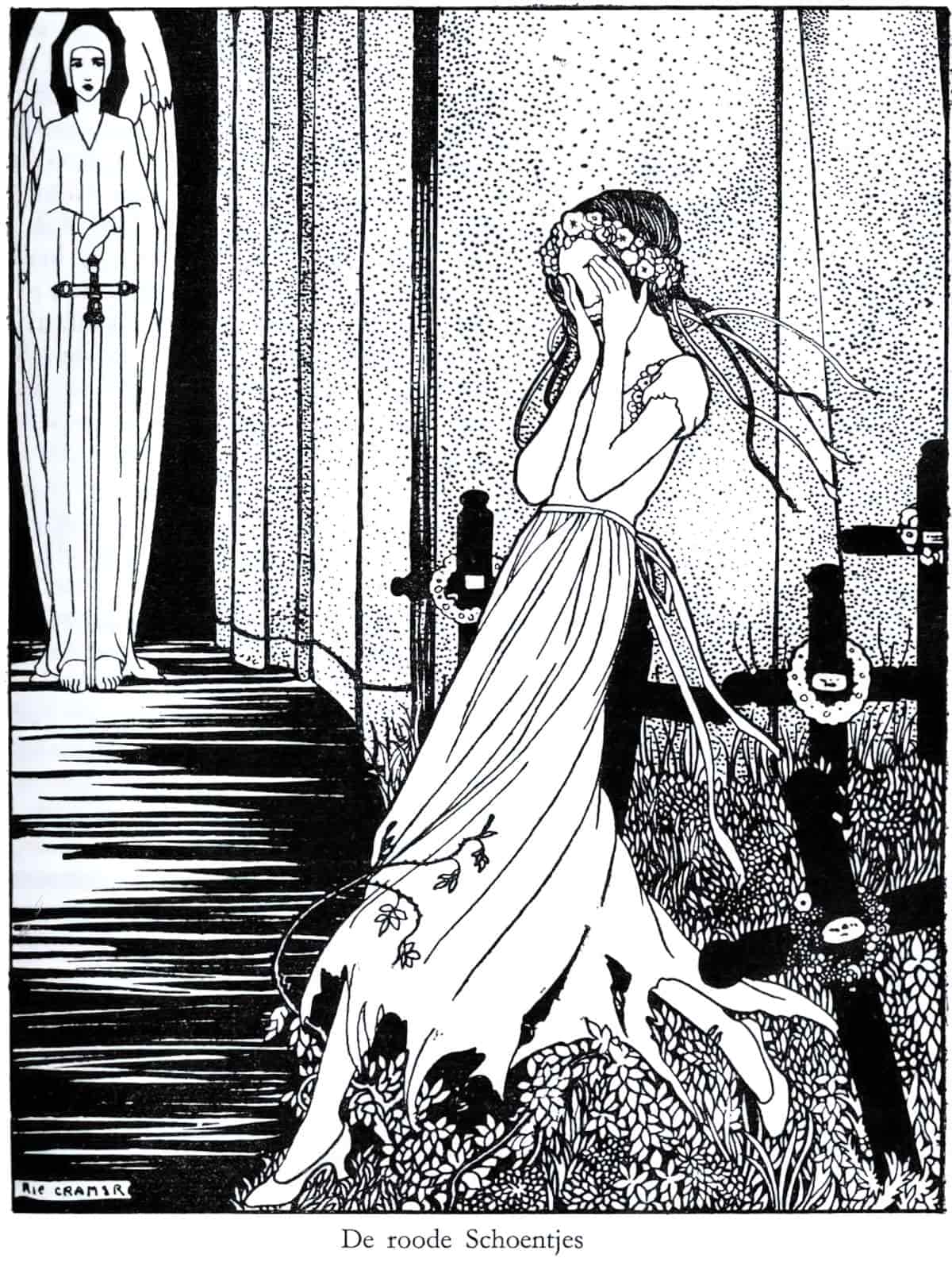
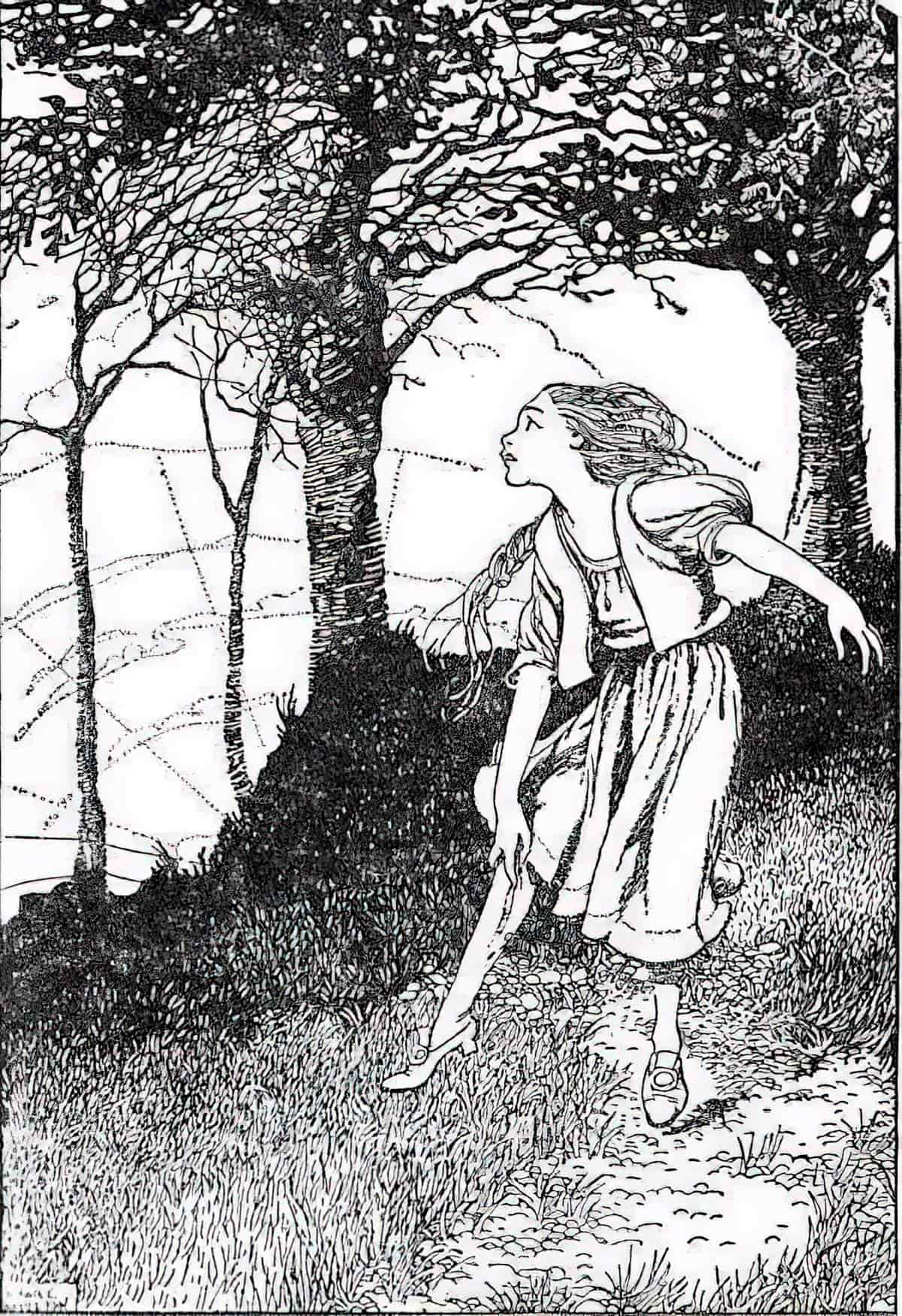
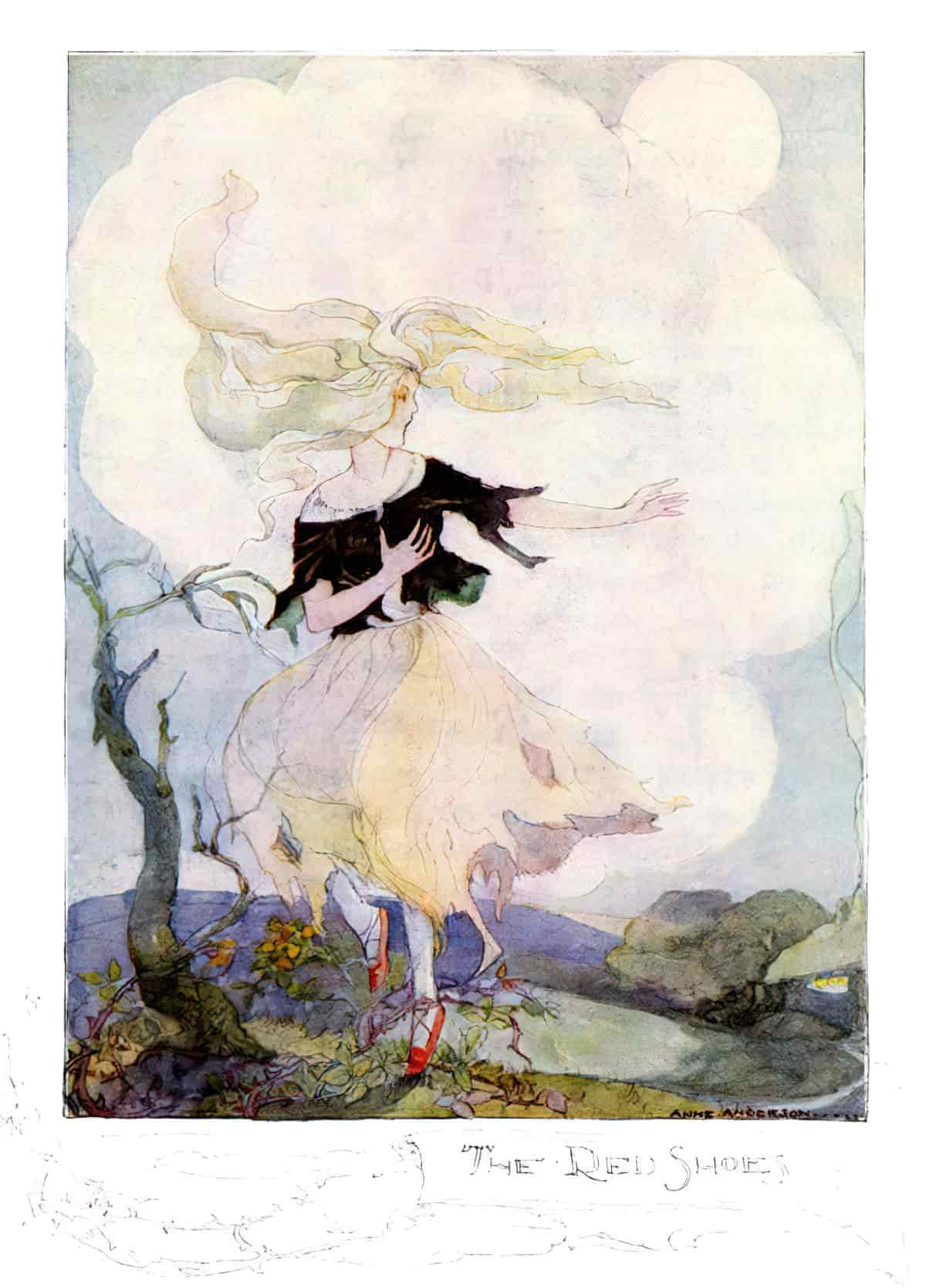
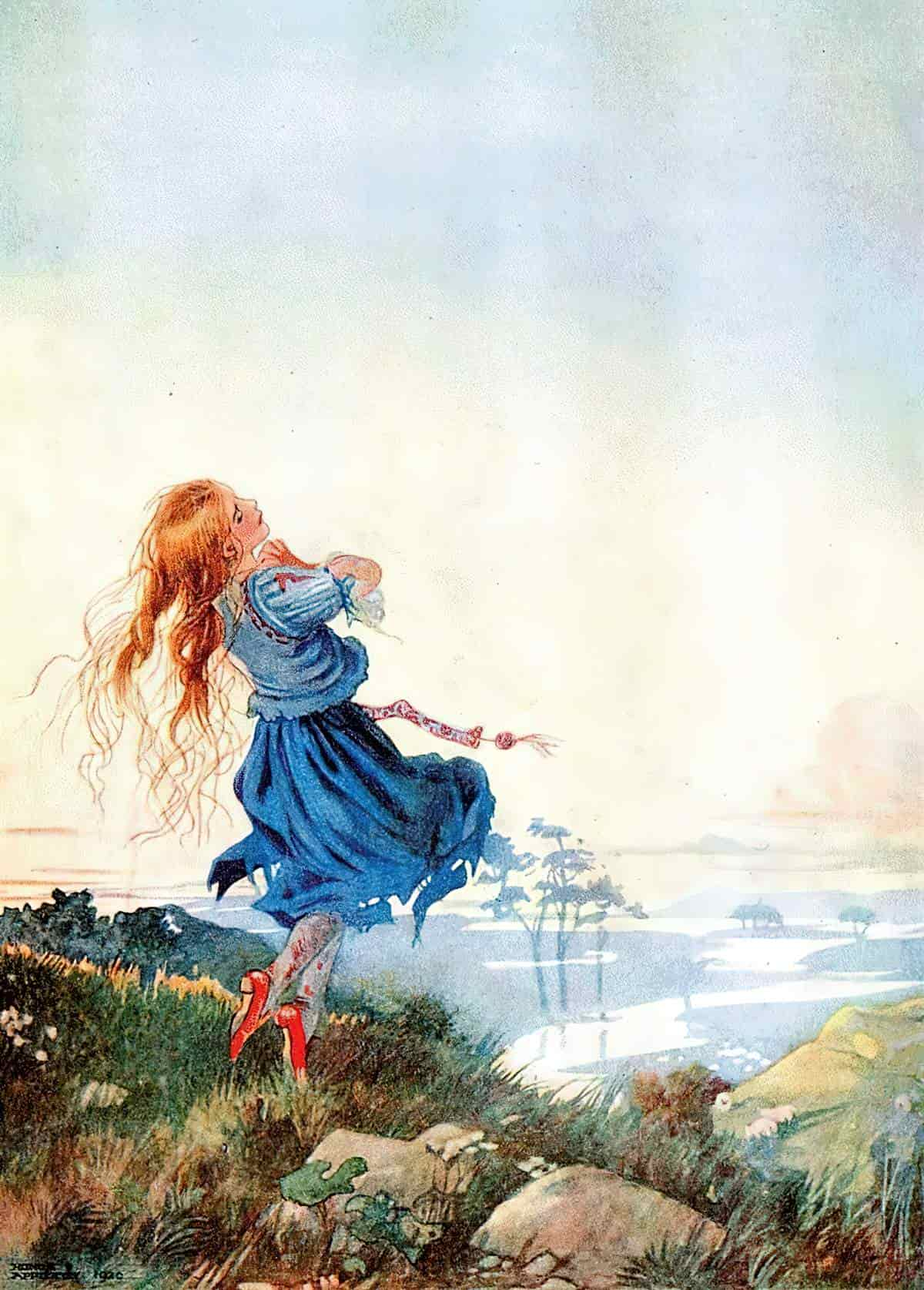
The spinning of the dance represents the vortex of addiction or loss of control. Note that women’s sexuality is always seen as wrong. If the dominant culture says sex is wrong, then women are too lustful, too greedy for sex.
We happen to be living in a time when sex is right and good, to the point where we are now living in a culture in which partnered sexual expression is problematically compulsory. So now, since women’s sexuality is always wrong, women are seen as being frigid, i.e., not having enough sex. This goes back a very, very long way. Study long history and the pattern is extremely clear. Historians such as Dr. Eleanor Janega have studied this, talked about it and written about it.
See also: Dancing Mania a.k.a. Dancing Plagues.
Dancing mania was a social phenomenon that occurred primarily in mainland Europe between the 14th and 17th centuries. It involved groups of people dancing erratically, sometimes thousands at a time. The mania affected adults and children who danced until they collapsed from exhaustion and injuries.
Wikipedia
The idea that something fun once started can’t be stopped is also evident in modern Purity Culture. Don’t have sex: You won’t be able to push the toothpaste back into the tube. Even in non-religious rhetoric, truisms such as, “More more sex you have, the more you want,” or “Sex is like ice-cream, once you try it you can’t stop at a single taste” all suggest that humans have no control over desire. Whereas this so-called lack of control is used to excuse bad male behaviour, it is used to condemn female behaviour which seems ‘silly ‘hysterical’ or excessively sexual.
See also: Lisztomania or Liszt fever, after a Hungarian composer who was very popular with young women (predating Elvis, The Beatles, Justin Bieber and Kim Kardashian).
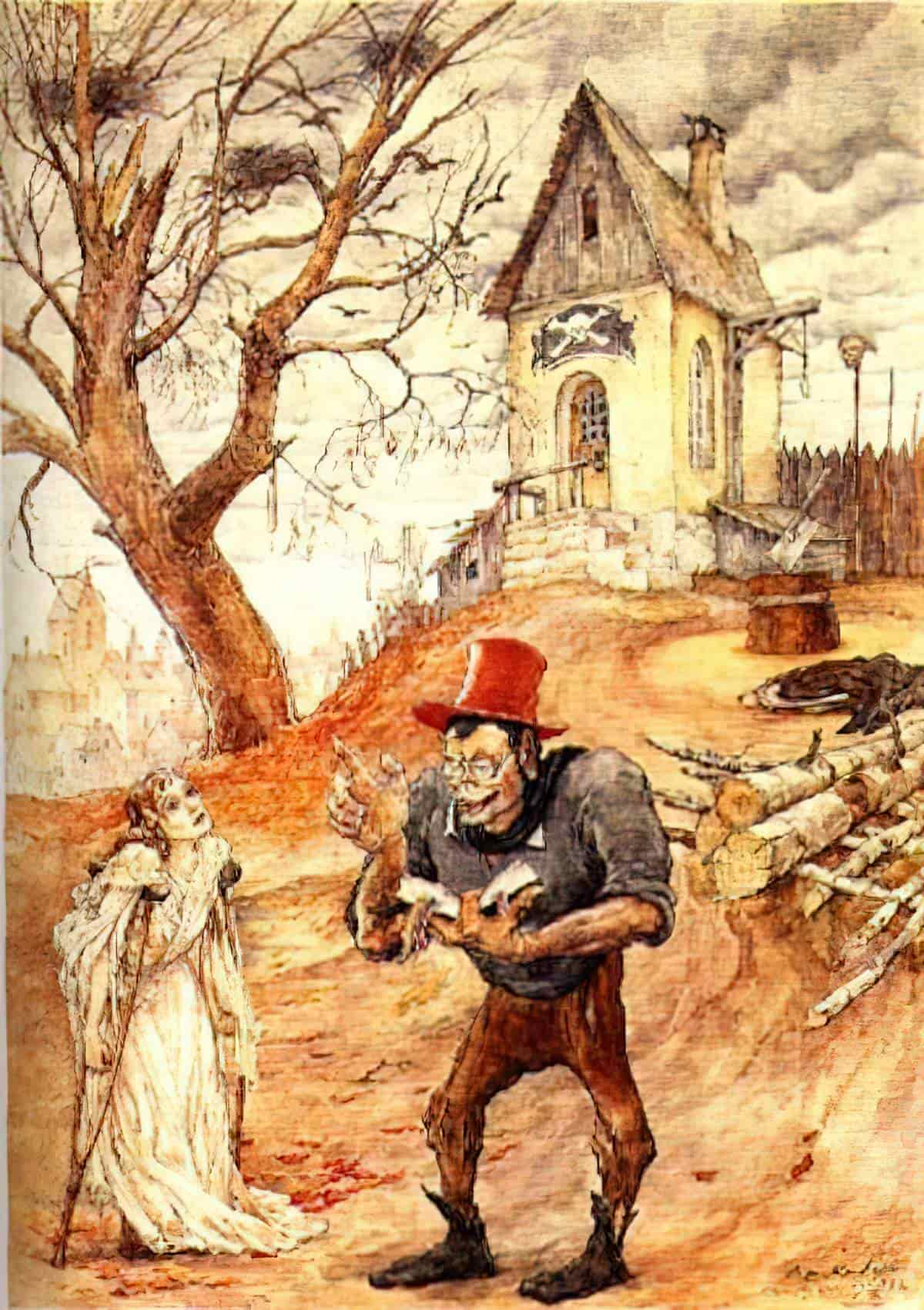
ANAGNORISIS
Once Karen has been reduced to a ‘cripple’, like the soldier on crutches, she sees the error of her ways. Content to be alive, she will live her life as a humble servant in service of… God, I guess?
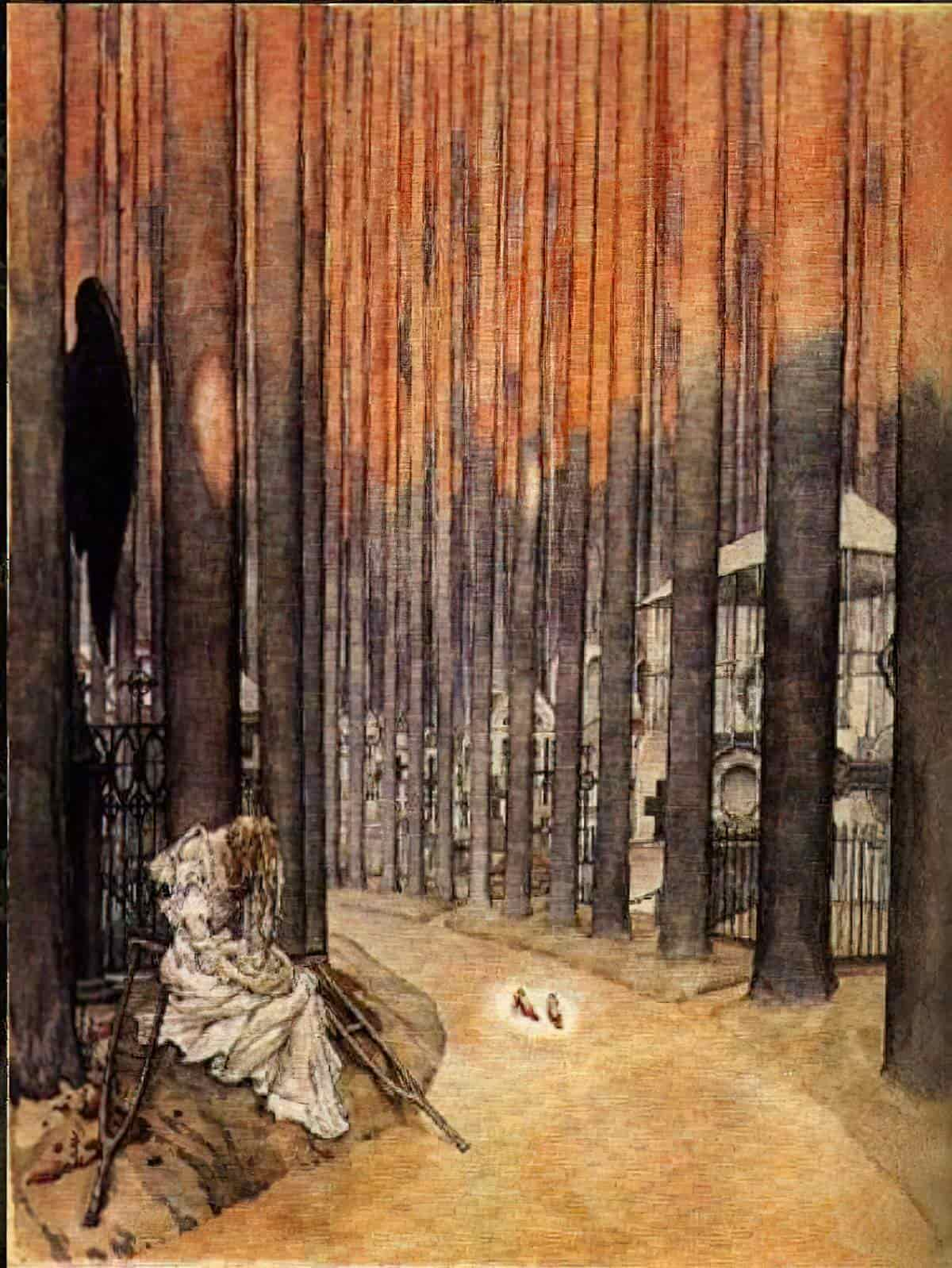
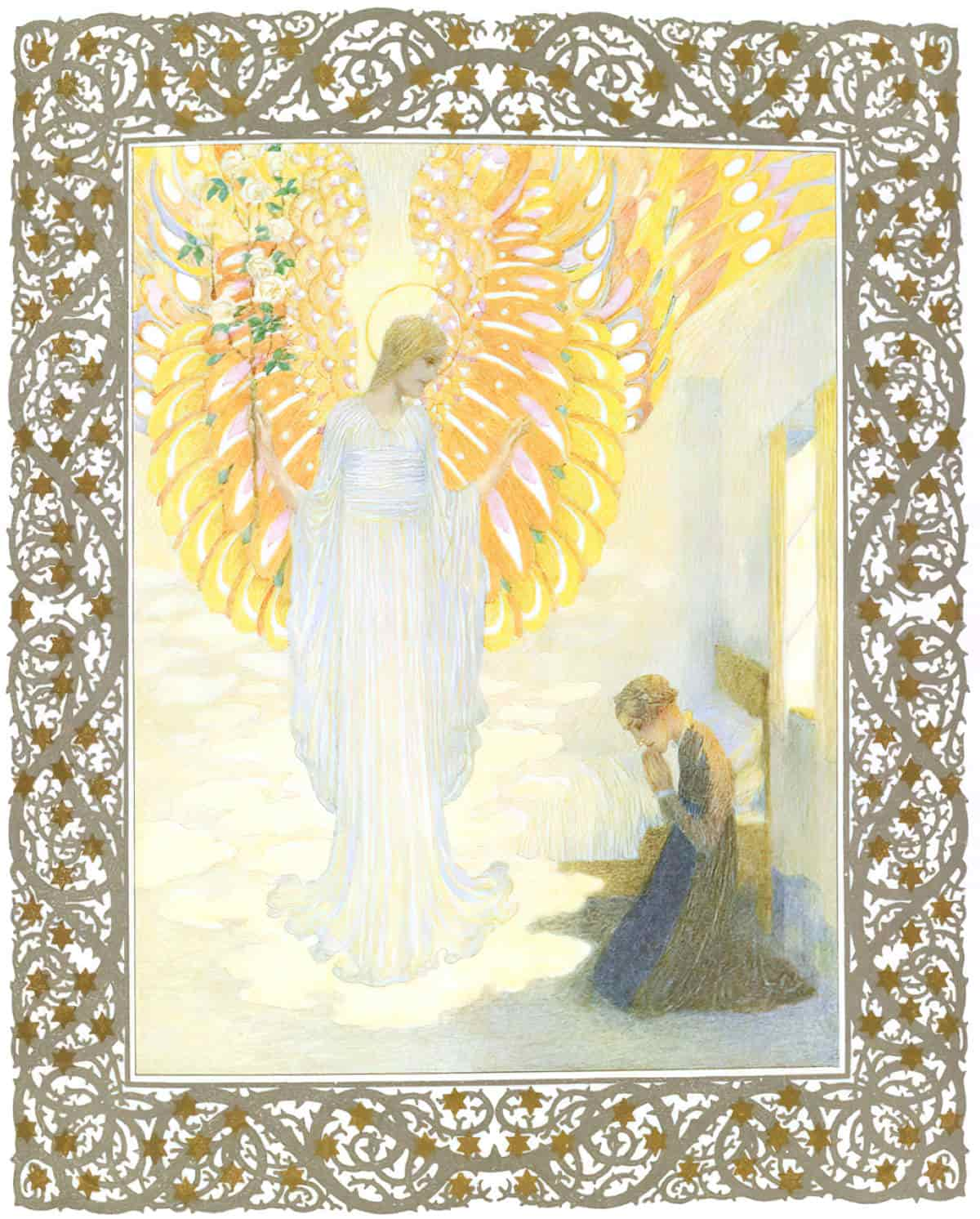
NEW SITUATION
But those dirty shoes still follow her around. I take this to be a metaphor for post traumatic stress disorder.
RESONANCE
Punishment is out of fashion (because it doesn’t work).
Andersen’s Victorian variety of retributive, torturous punishment feels utterly medieval. In fact, medieval punishments were very often symbolic. (Tell a lie, get your tongue cut out; see something you shouldn’t lose your eyes…) That said, we shouldn’t make the mistake of thinking people living through the Middle Ages were exacting symbolic punishments willy nilly. No, these symbolic punishments were rare. But also very effective, which is why we still remember notable examples.
Although “The Red Shoes” feels like total retributive overkill, the fairytale of the shoes with a life of their own continues to intrigue the imaginations of storytellers, albeit in various different forms. Let’s take a look at some examples.
FILM ADAPTATION
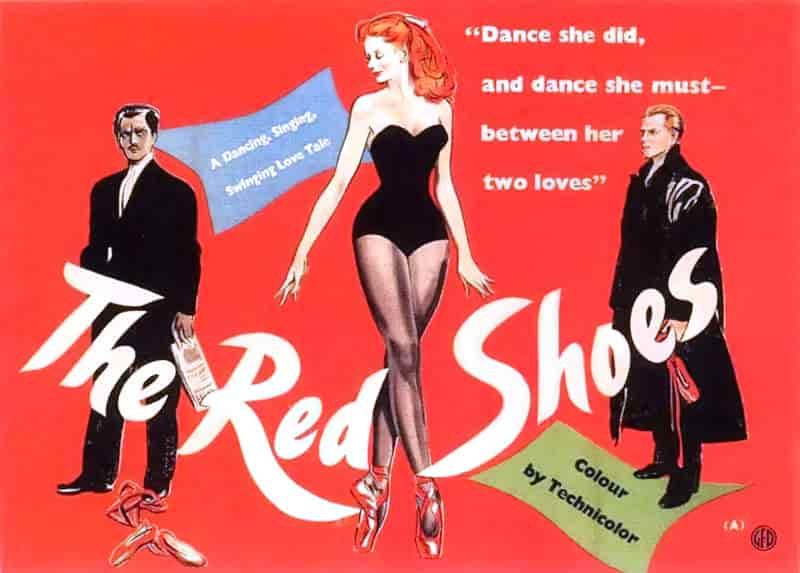
The plot of this film from 1948 combines Andersen’s fable, “The Red Shoes” with elements of Dyagilev’s relationships with Nizhinskii and Myasin, and the effect of the younger men’s marriages. It’s basically a fight-fight-kiss romance following the story of a dancer called Vicky.
At the film’s heart is a fourteen-minute cine-ballet which follows the outlines of the Andersen original, retaining the church and the community as the moral forces opposed to waywardness, and the girl’s ceaseless dance through fields, forests, graveyards, and city streets as the central action. For the purpose of dramatizing this conflict, the shoemaker is the devil in disguise, giving the shoes magic powers so that they attract the girl and jump onto her feet as if of their own volition. Opposing him is a non-Andersen character, the boy, representing love; he tries to warn and rescue her, but fails. The only Andersen element completely missing is the foot-chopping.
The Greenwood Encyclopedia of Folktales and Fairy Tales
This film is discussed at The Projection Booth and also at the Criterion Cast.
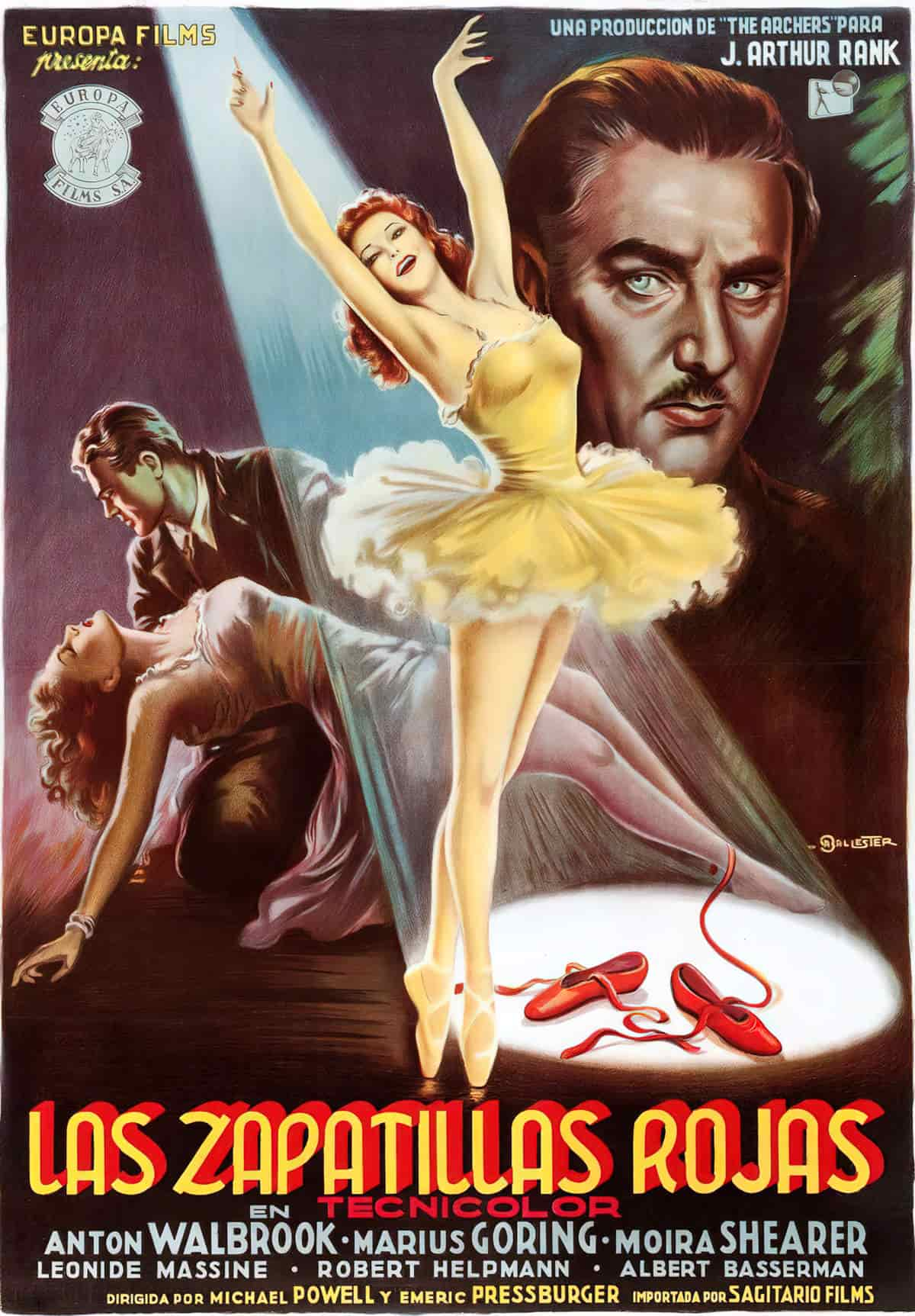
SHORT STORY ALLUSION
“The Time of Death” by Alice Munro (1968) has Andersen’s “The Red Shoes” as a palimpsestic text. Munro makes use of “The Red Shoes” as an implicit reference within the text. There are no overt references to Andersen’s fairy tale, but if you read them one after the other, the similarities are crystal clear.
Alice Munro explores the injustice of Karen-blame in her short story. Munro’s young 1960s Karen character is focusing on things like shoes to cope with the trauma of a dead family member.
THE RED SHOES AND CHILDREN’S LITERATURE
Turning now to children’s literature, you wouldn’t want kids reading about people having their feet cut off, would you? Not in modern publishing, no. But those old tales of red shoes remain influential all over the place.
Anthony Browne makes use of red shoes in his illustrations of Hansel and Gretel.
IVY + BEAN: DOOMED TO DANCE BY ANNIE BARROWS
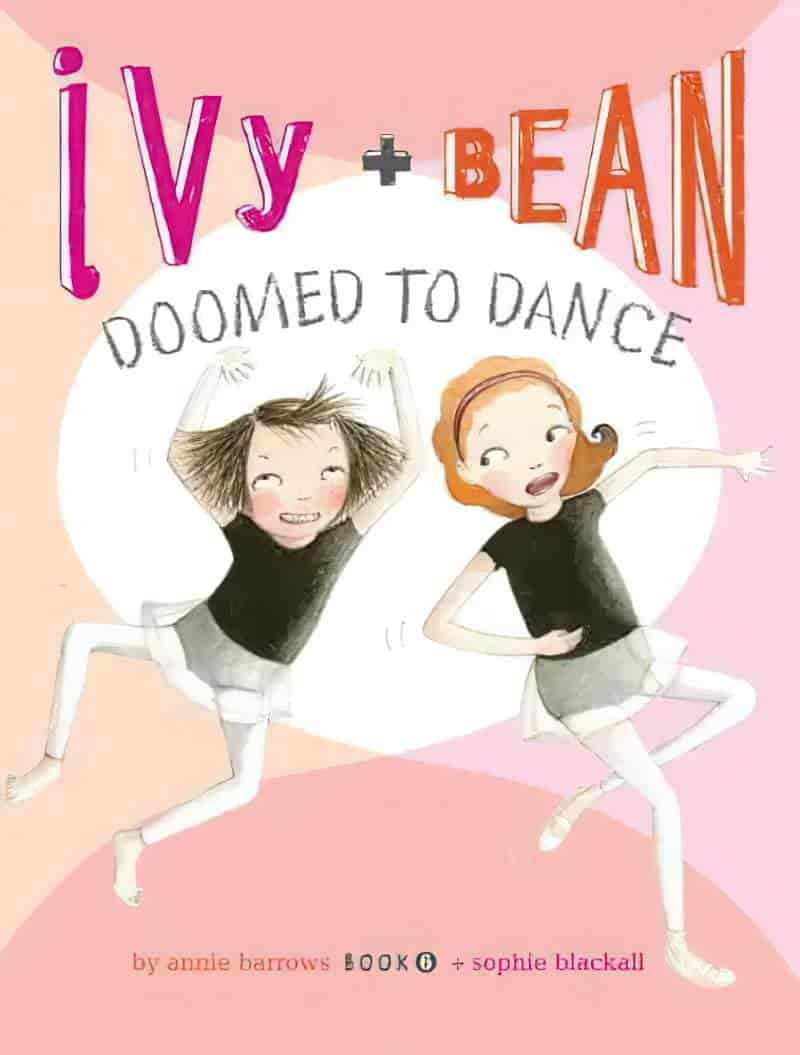
The cover of this Ivy + Bean chapter book is clearly inspired by the old fairytale. Ivy + Bean want to learn to dance, but are shocked when they enrol in lessons only to be told they must learn the steps.
After months of begging for ballet lessons, Ivy and Bean get what they wanted. Well, not exactly. It turns out ballet lessons are actually about learning to dance gracefully. There are no karate chops as Ivy and Bean thought. If only the girls hadn’t promised their parents they would finish the ballet course…
THE GOBLIN MARKET
The red shoes in this Arthur Rackham illustration for “The Goblin Market” are noteworthy.
“The Goblin Market” is Christina Rossetti’s most famous poem. (Rosetti was born just 25 years after Hans Christian Andersen.) Two sisters, Lizzie and Laura: one good, one not so good. Laura gives in to temptation and tastes the fruit sold by goblins at a forest goblin market. As any sensible person knows, you never eat food offered by fairies. Once you taste it, they have you in their grips.
Of course, the fruit is highly symbolic cf. the ‘apple’ in the Garden of Eden.
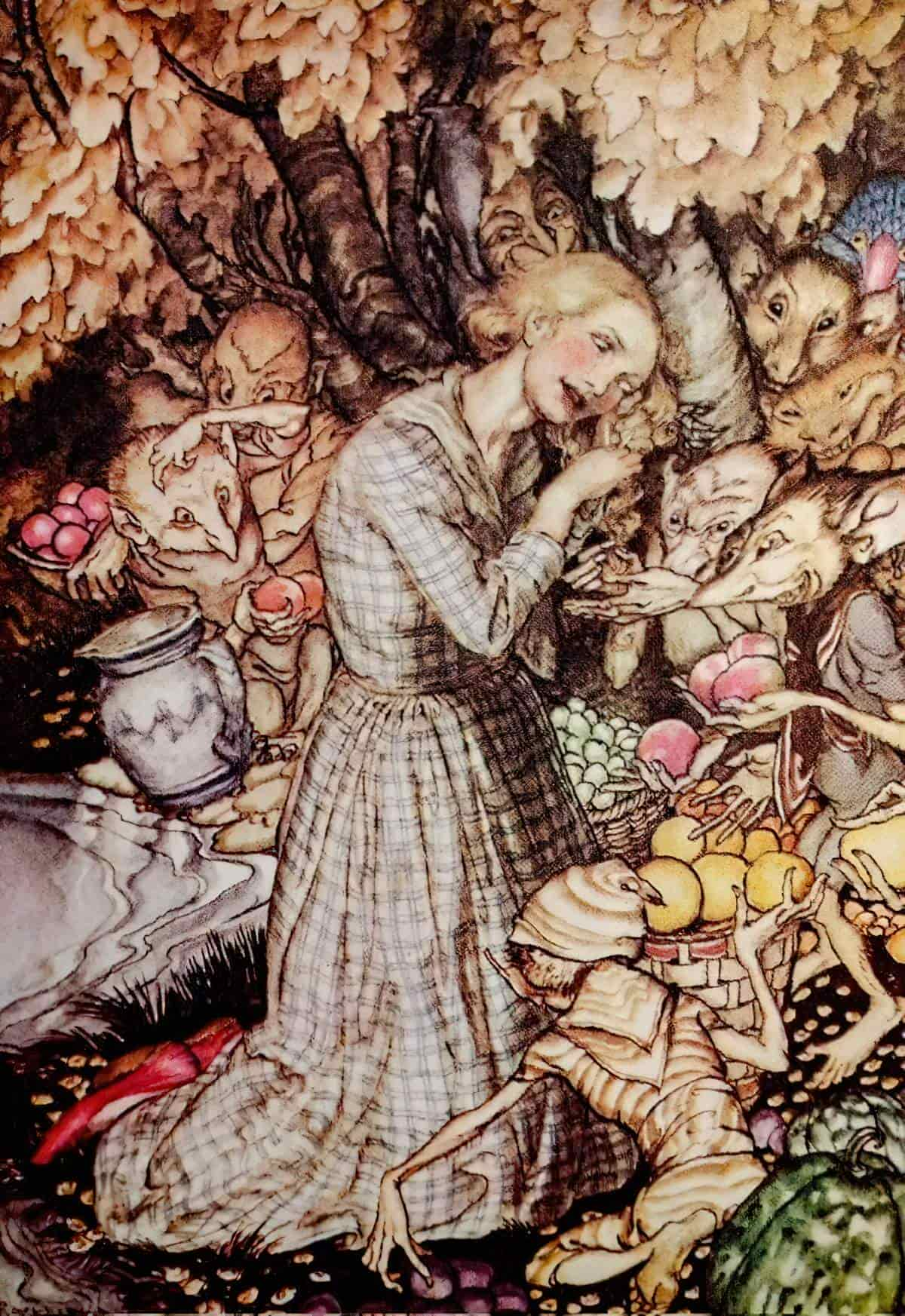
AS LUCY WENT A-WALKING
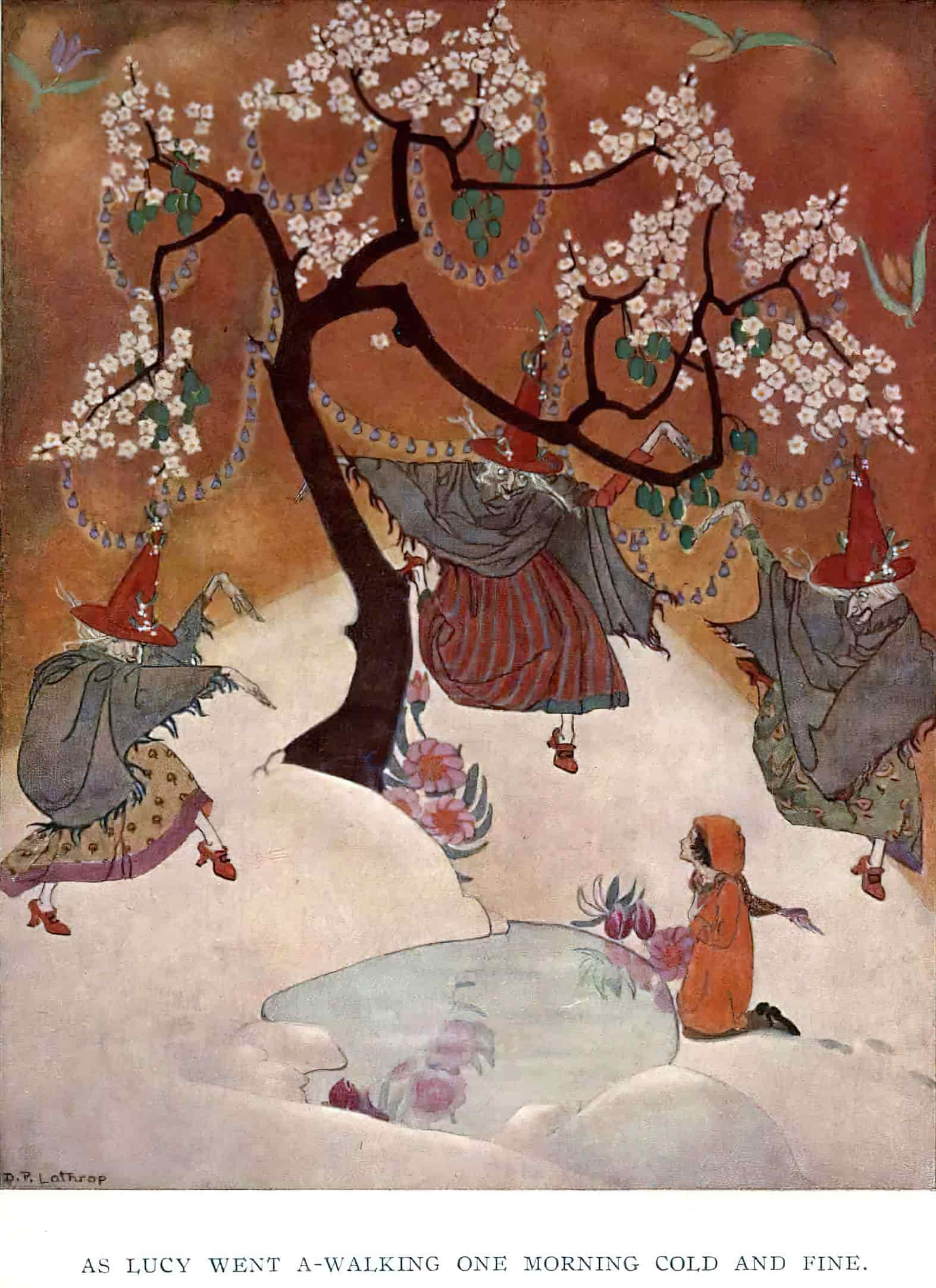
As Lucy went a-walking one morning cold and fine, There sate three crows upon a bough, and three times three is nine: Then "O!" said Lucy, in the snow, "it's very plain to see A witch has been a-walking in the fields in front of me." Then stept she light and heedfully across the frozen snow, And plucked a bunch of elder-twigs that near a pool did grow: And, by and by, she comes to seven shadows in one place Stretched black by seven poplar-trees against the sun's bright face. She looks to left, she looks to right, and in the midst she sees A little pool of water clear and frozen 'neath the trees; Then down beside its margent in the crusty snow she kneels, And hears a magic belfry a-ringing with sweet bells. Clear sang the faint far merry peal, then silence on the air, And icy-still the frozen pool and poplars standing there: Then lo! as Lucy turned her head and looked along the snow She sees a witch—a witch she sees, come frisking to and fro. Her scarlet, buckled shoes they clicked, her heels a-twinkling high; With mistletoe her steeple-hat bobbed as she capered by; But never a dint, or mark, or print, in the whiteness for to see, Though danced she high, though danced she fast, though danced she lissomely. It seemed 'twas diamonds in the air, or little flakes of frost; It seemed 'twas golden smoke around, or sunbeams lightly tossed; It seemed an elfin music like to reeds and warblers rose: "Nay!" Lucy said, "it is the wind that through the branches flows." And as she peeps, and as she peeps, 'tis no more one, but three, And eye of bat, and downy wing of owl within the tree, And the bells of that sweet belfry a-pealing as before And now it is not three she sees, and now it is not four — "O! who are ye," sweet Lucy cries, "that in a dreadful ring, All muffled up in brindled shawls, do caper, frisk, and spring?" "A witch, and witches, one and nine," they straight to her reply, And looked upon her narrowly, with green and needle eye. Then Lucy sees in clouds of gold green cherry trees up-grow, And bushes of red roses that bloomed above the snow; She smells, all faint, the almond-boughs blowing so wild and fair And doves with milky eyes ascend fluttering in the air. Clear flowers she sees, like tulip buds, go floating by like birds, With wavering tips that warbled sweetly strange enchanted words; And, as with ropes of amethyst, the boughs with lamps were hung, And clusters of green emeralds like fruit upon them clung. "O witches nine, ye dreadful nine, O witches seven and three! Whence come these wondrous things that I this Christmas morning see?" But straight, as in a clap, when she of Christmas says the word, Here is the snow, and there the sun, but never bloom nor bird; Nor warbling flame, nor gleaming-rope of amethyst there shows, Nor bunches of green emeralds, nor belfry, well, and rose, Nor cloud of gold, nor cherry-tree, nor witch in brindle shawl, But like a dream that vanishes, so vanished were they all. When Lucy sees, and only sees three crows upon a bough, And earthly twigs, and bushes hidden white in driven snow, Then "O!" said Lucy, "three times three is nine—I plainly see Some witch has been a-walking in the fields in front of me."
THE WONDERFUL WIZARD OF OZ
I’ll call it: The most famous children’s literature example of red shoes denoting evil is in The Wonderful Wizard of Oz.
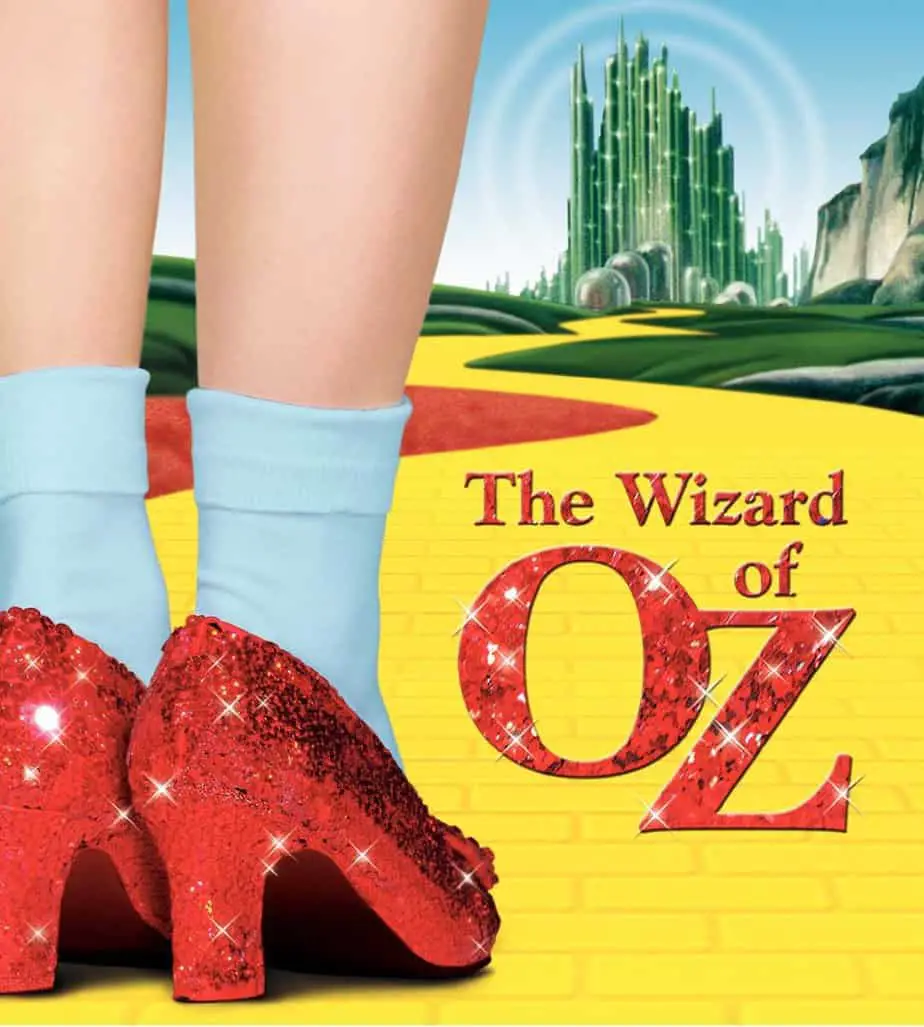
Snipp, Snapp. Snurr and The Red Shoes (1936)
One day the three boys decide to buy their mother the perfect birthday present–a pair of red shoes. They set out to earn some money. Snipp paints a fence; Snapp cleans a chimney; Snurr works in a flour mill. Things do not go exactly as planned, but in the end, Mother is very surprised! (These are Very Good Boys who work hard.)
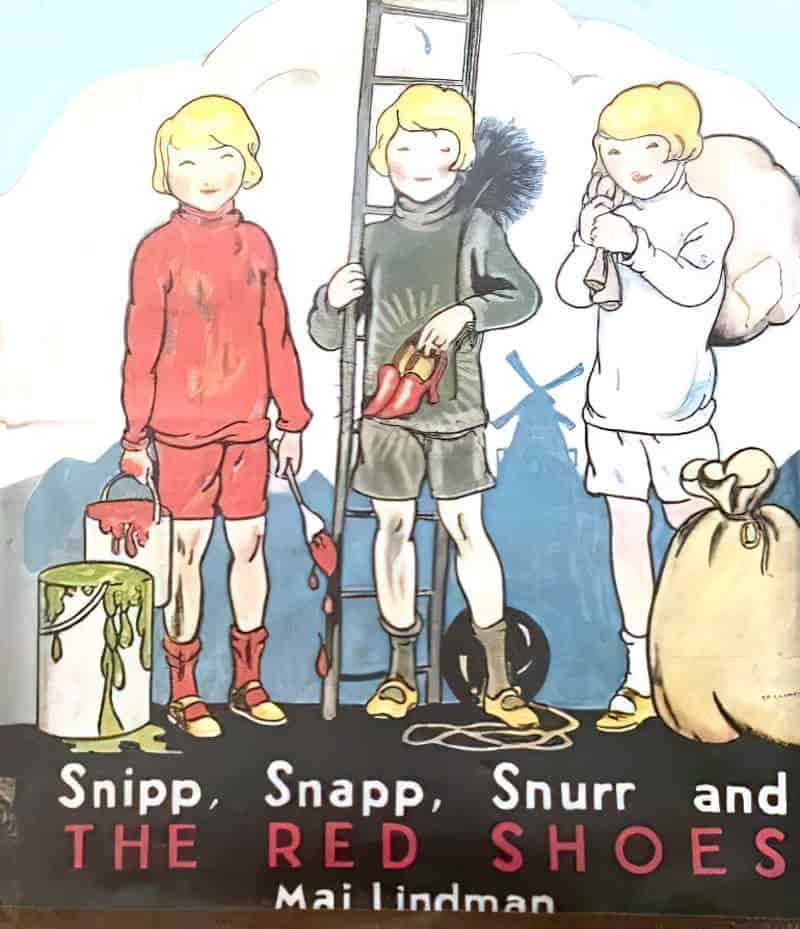
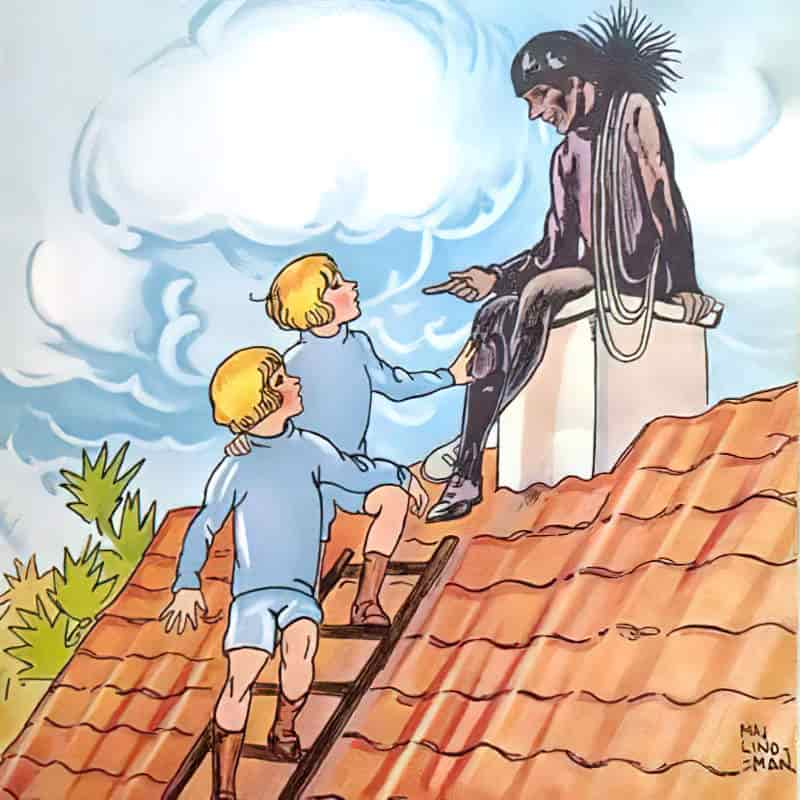
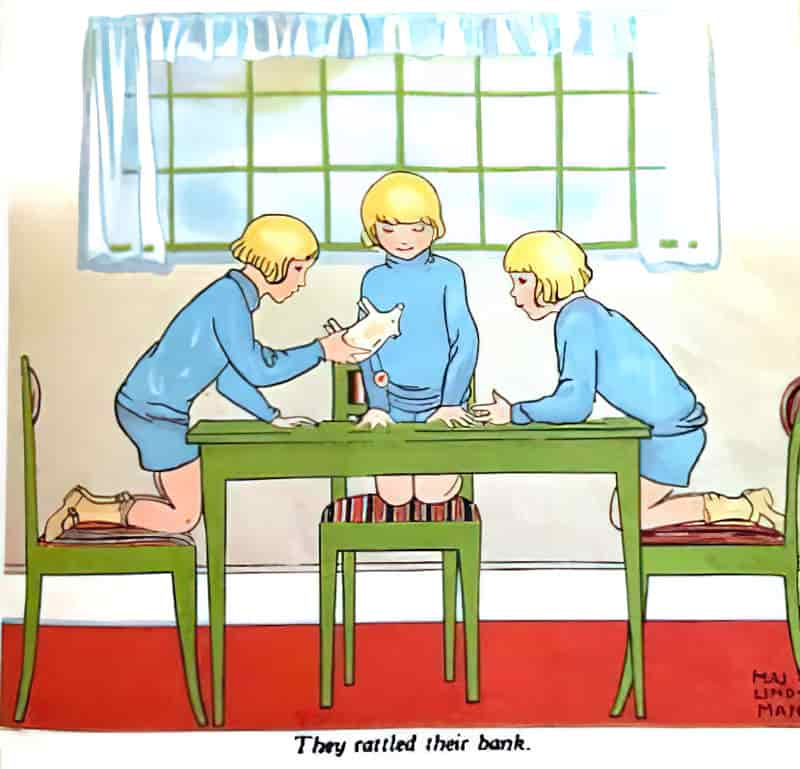
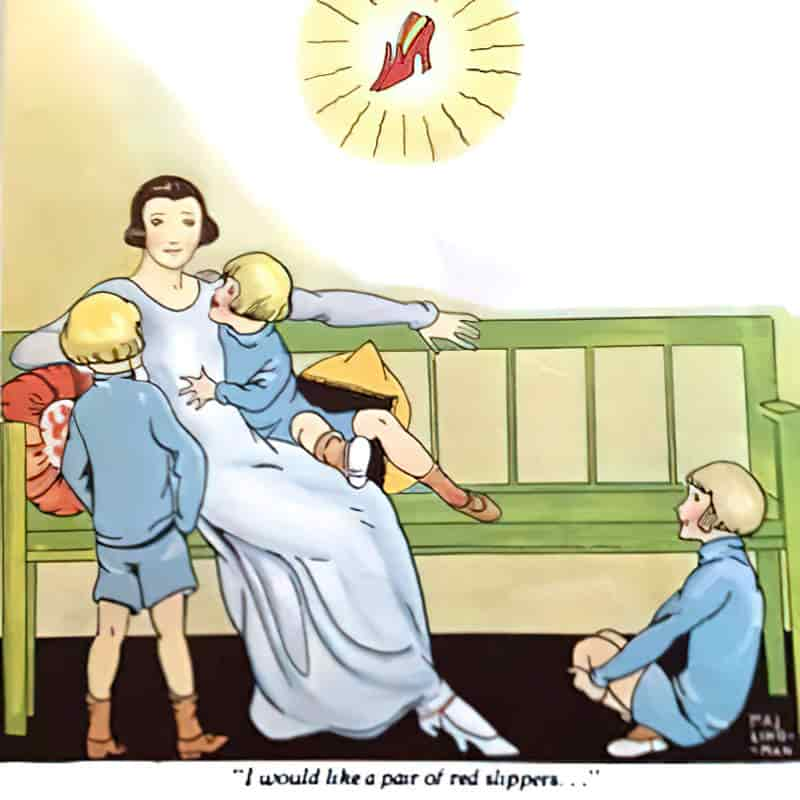
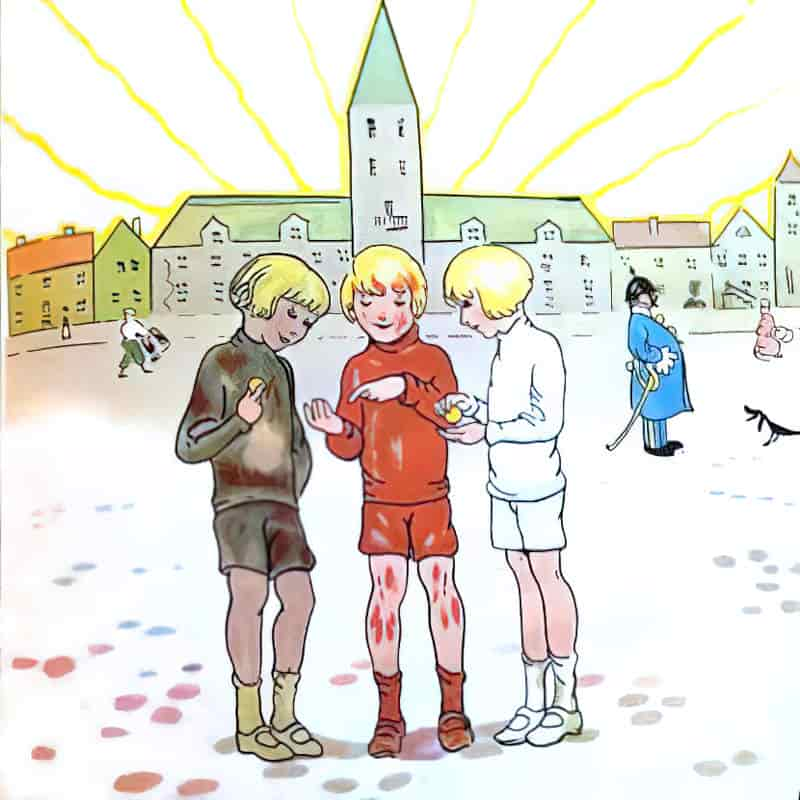
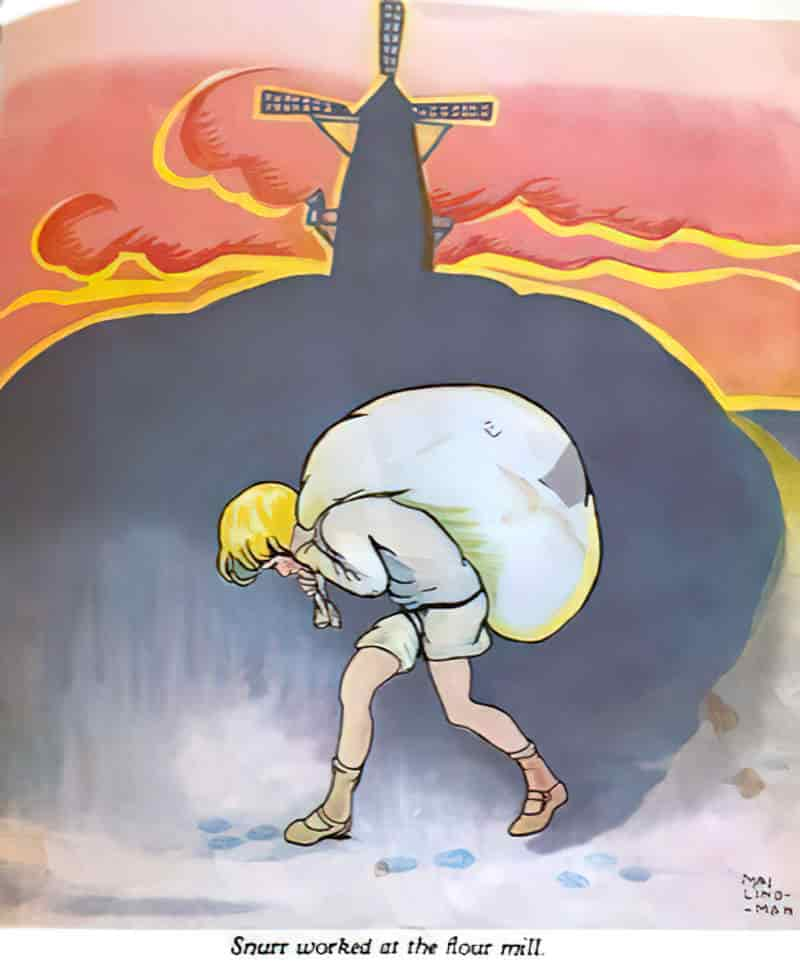
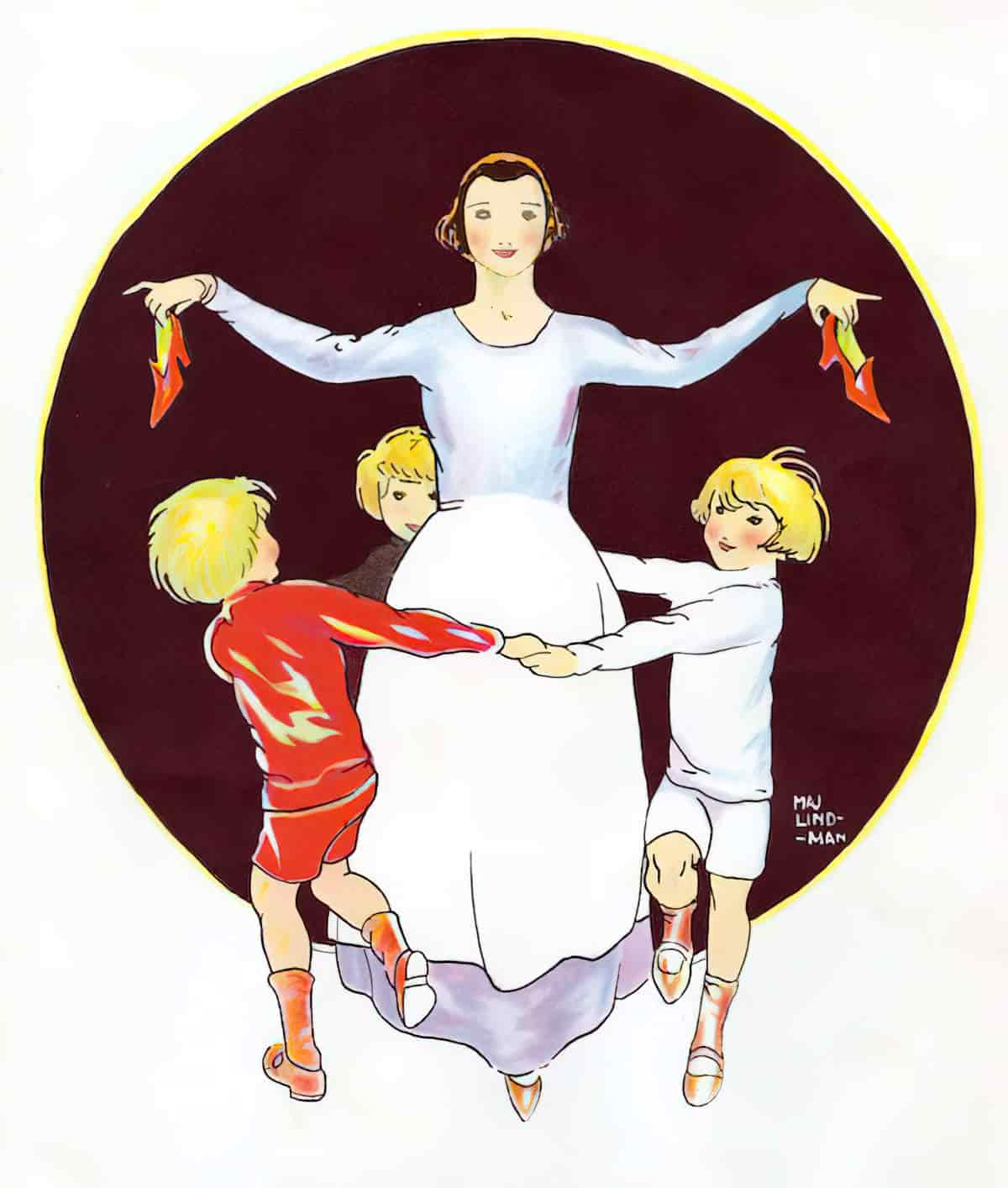
UNCOMFORTABLE SHOES THROUGHOUT HISTORY
I think we can all agree, Karen’s red shoes go beyond ‘uncomfortable’. However, I’m interested to learn if the imagination of Hans Christian Andersen might have been influenced by shoes themselves, as an uncomfortable item of clothing.
Let’s start with the Middle Ages. Specifically, with bunions.
- Some people are born with bunions but they also have a lot to do standing for long times in bad footwear e.g. high heels, tight around the toes. (Source: “Bunions in the Middle Ages”, Gone Medieval Podcast)
- Shoes are a lot more comfortable now than they were in the middle ages. There’s evidence of bony protrusions in skeletal remains from the medieval era.
- The incidence of bunions varies quite a lot from burial site to burial site (between about 10% to 50%).
- 6% of people who lived in the 11th and 13th centuries had bunions. But 27% of people who lived from in the 14th and 15th centuries had bunions.
- This change is directly related to the type of footwear people were wearing. In the middle of the 14th century, shoes became pointy toed.
- Before then, people wore flat, rounded-toe shoes with a wide toe box, plenty of room to wiggle your toes.
- Pointy-toed shoes became known as poulaines. They had a long, exaggerated tip, often so long they’d be filled with wool or moss to keep their shape.
- They originated in Poland. Many people think they became popular in England when Richard the Second married Ann of Bohemia in the late 1300s.
- Skeletons show that people over 45 who also had bunions were significantly more likely to also have a fracture which resulted from a fall.
- This finding is consistent with modern research. Bunions are an independent risk factor for falls, especially for older adults walking over uneven ground. The big toe plays an important role in upper body stability. Bunions are dangerous.
- “During the eighteenth century shoes and boots were made on straight lasts, or forms that created the soles of shoes, called straights. Without a sole designed specifically for the left or the right foot, shoes were uncomfortable. People frequently switched shoes from one foot to another to reduce the pain.”(Source: Eighteenth Century Footwear)
- The first rubber soled shoes called plimsolls were developed and manufactured in the United States in the late 1800s, which is after Hans Christian Andersen’s lifetime. Rubber sneaker type shoes were invented just after he died.
- However, since Andersen’s father was a shoemaker, we can guess young Hans had access to the most comfortable (or well-fitting) shoes available at the time. Shoe laces had been invented in England in 1790, replacing buckles.
- The Industrial Revolution gave rise to the sewing machine, “which greatly reduced the time and cost involved in shoemaking, therefore creating a more affordable product for the general public. This new machinery allowed for easy stitching through multiple layers of thick outsole leather to create a hard-wearing, reliable product.” (Source: A Brief History of Uncomfortable Shoes)
- Ergo, the shoes worn by Hans Christian Andersen weren’t too different from leather shoes men wear today. The low tie (a non-boot lace-up) was the dominant style of man’s shoe in the mid 19th century. They also wore button-ups with a low heel, the sort of thing you might see a Goth guy wearing today. Working men wore shoes and boots suitable to their trade.
Header illustration: The Red Shoes From Fairy Tales from Hans Christian Andersen (1914) by Dugald Stewart Walker, American, children’s book author and illustrator.

